Tuesday, 18 June 2024
Royan
After so much country air, it was of course a pleasure to take a deep breath and breathe in the sea air in Royan on June 17th. This air is clear and moist, and then there was a long thunderstorm at night, it just feels good.
Amica arrived at the port at around 1:30 p.m. and the freight forwarder managed to get the boat off the trailer before the official deadline. I then used the time to clean the underwater hull.
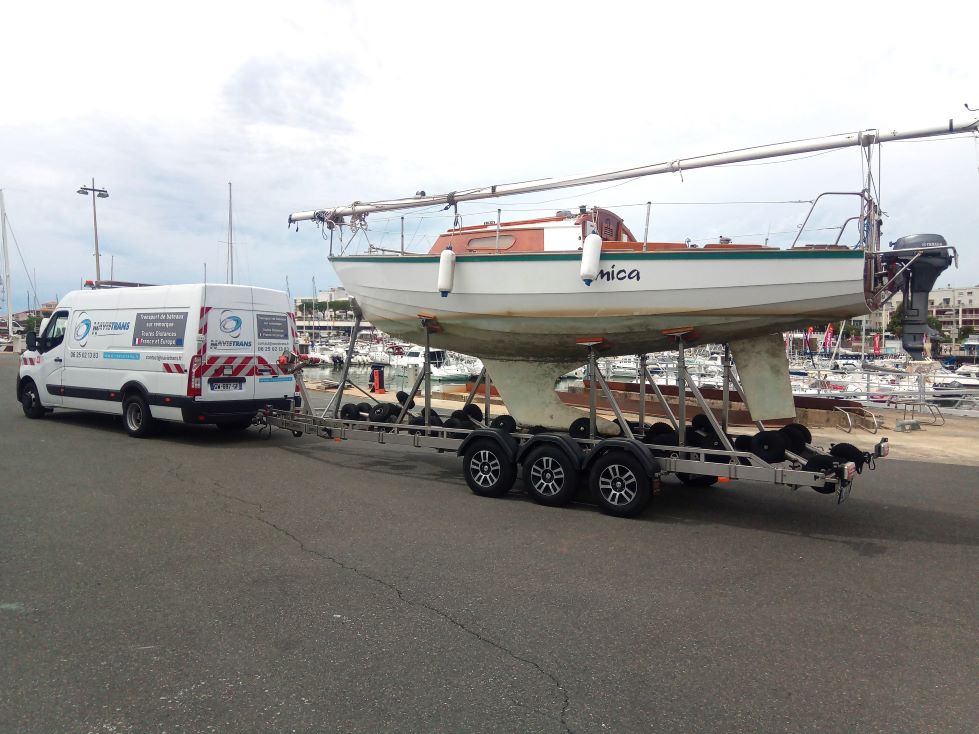
Amica on the trailer, still very dirty
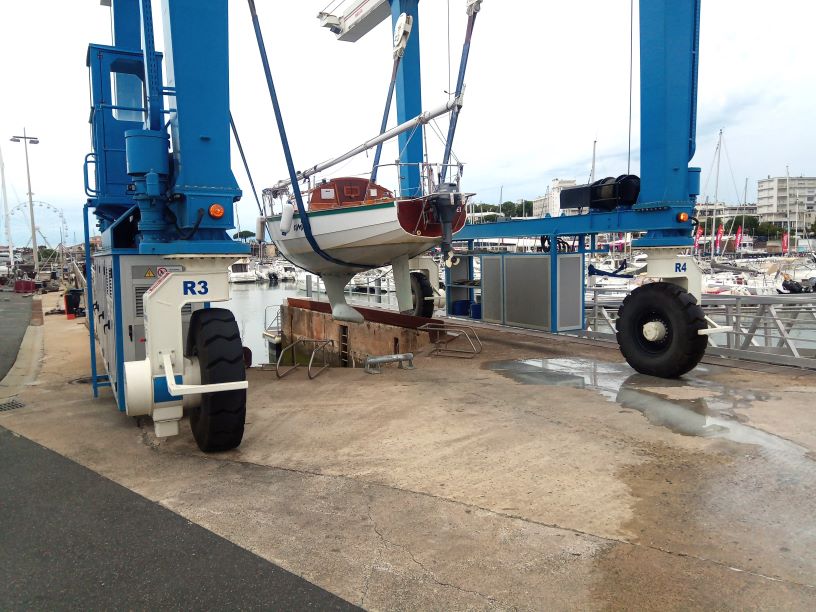
Amica in the boat lift after high-pressure cleaning
The launching was quick and problem-free. They can do that here.
Then I had to wait another 5 days for the mast to be erected. That only be done professionally here with an electric mast crane, and you need an appointment for that. Then comes the mast trimming and securing everything. The electrical and electronic connections have to be checked and connected. That takes more than a day. Overall, I spent a week in Royan. It also got really hot here, over 30 degrees. In the afternoon, nothing worked at all. I was glad to finally get back to the sea, the Atlantic with swell. These are gentle movements, really great. Unfortunately, the first few days were without wind.
Monday, July 1, 2024
Saint Gilles Croix de Vie
Exit Royan, doesn’t look so nice from the outside.
The suburbs looks nicer.
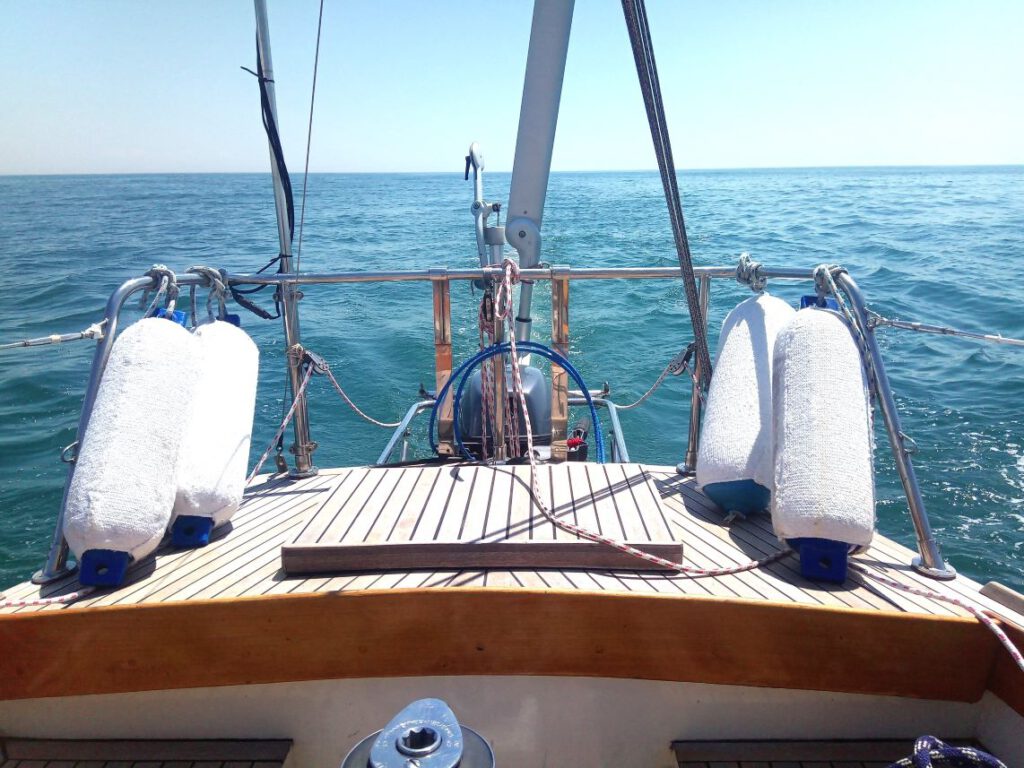
Moreover, my fenders gleaming white again after I removed all the covers that had been soiled by the lock.
At the end of the Gironde, about four nautical miles from land, there is a sandbank, roughly in the middle of the sea. Numerous wrecks all around bear witness to the dangerous nature of this bank, the Banc de Matelier or Banc de Coubre.
The Ile d’Oleron, an eternally long sandy beach and not a single hotel!
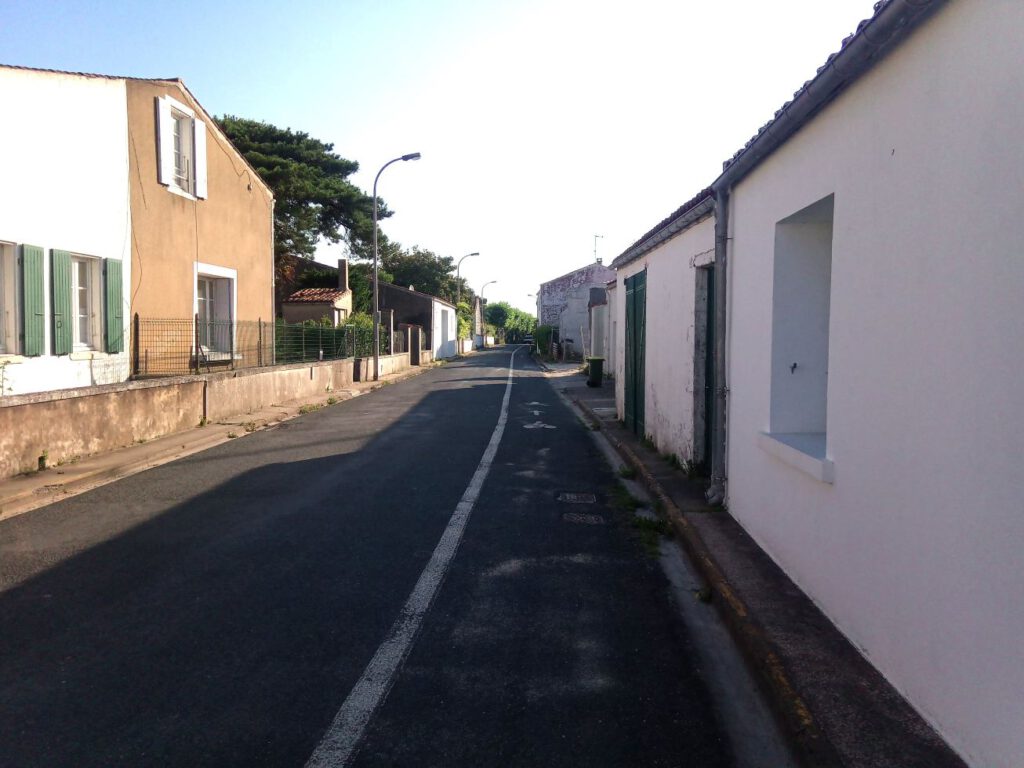
At the tip of the island is the port of Saint-Denis, a bit dull here.
Only the harbour had many restaurants.
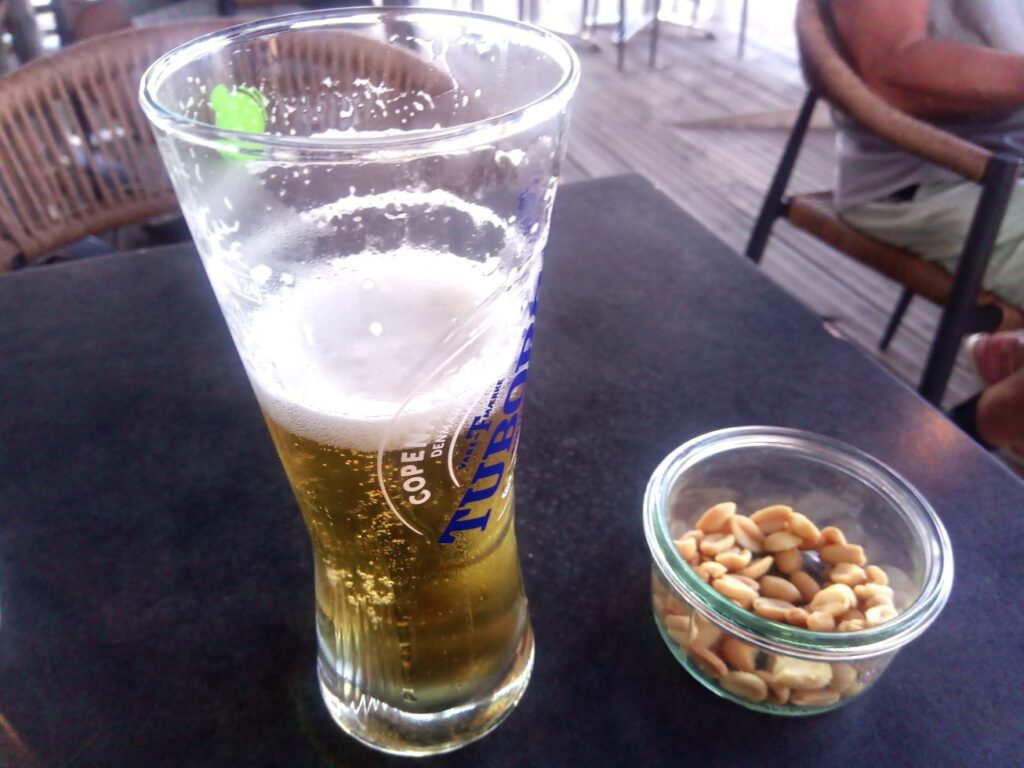
Here we finally had the cacahuètes with our beer.
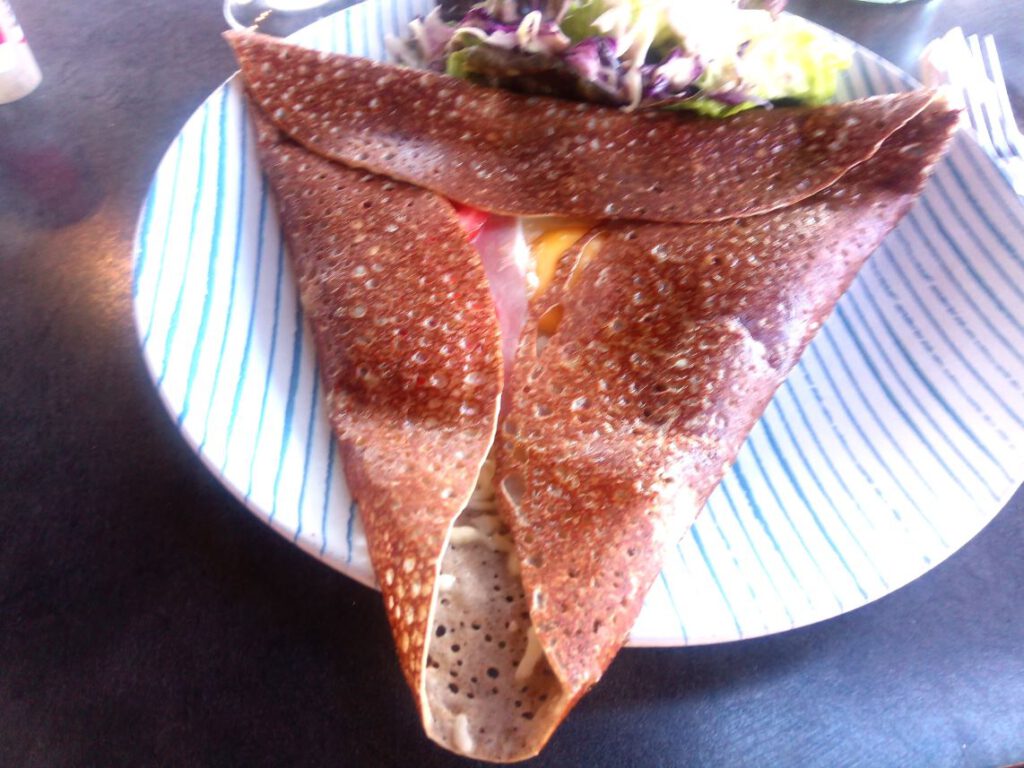
The galette was quite heavy on the stomach. Just buckwheat flour.
We continued north along the Ile de Rhe, with another endless sandy beach without people. It took me 8 hours to get to Saint-Denis on the first trip, but now it took me another six to Les Sables d’Olonne. I’ve earned a break here, and also there was a rainy day with strong winds from the northwest. On this rainy day, they organized their Iron Man, first a 2 km swim, then a 70 km bike ride and finally a half-marathon.
Of course, the harbour was closed.
The peloton came back here.
At the exchange-station, there was a lot of action.
During the run that followed, you could see from time to time that it was all quite exhausting. Respect for the more than 2000 non-professionals who fought their way through. There were around 60 pros and they took just under 4 hours. The last non-professional completed the course in 6.5 hours, just before the heavier rain started.
The next day I actually wanted to go straight to the Ile d’Yeu, but from there the low wind came. So I opted for the 17 nautical miles to Saint Gille Croix de Vie, but also under motor, because you can’t sail the acute angle and I didn’t feel like crossing in the weak wind.
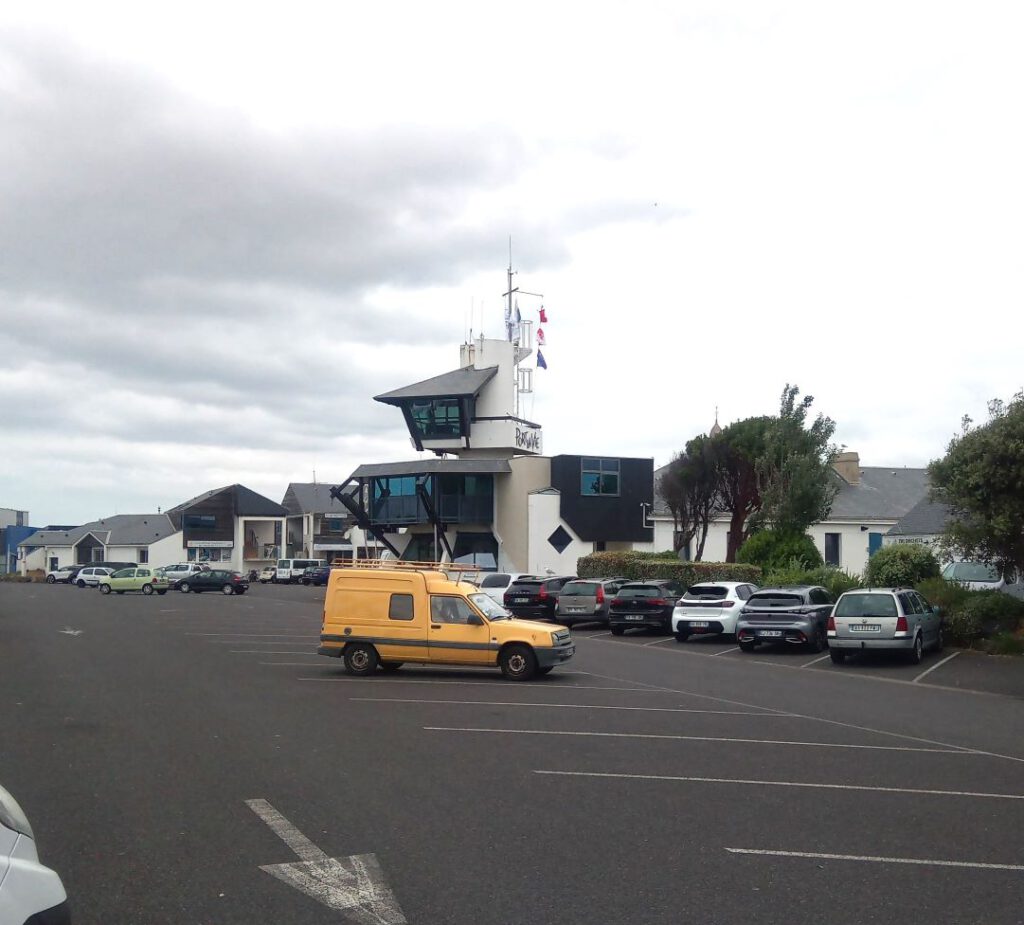
In Saint Gilles Croix de Vie they also have a tower on the Capitainerie.
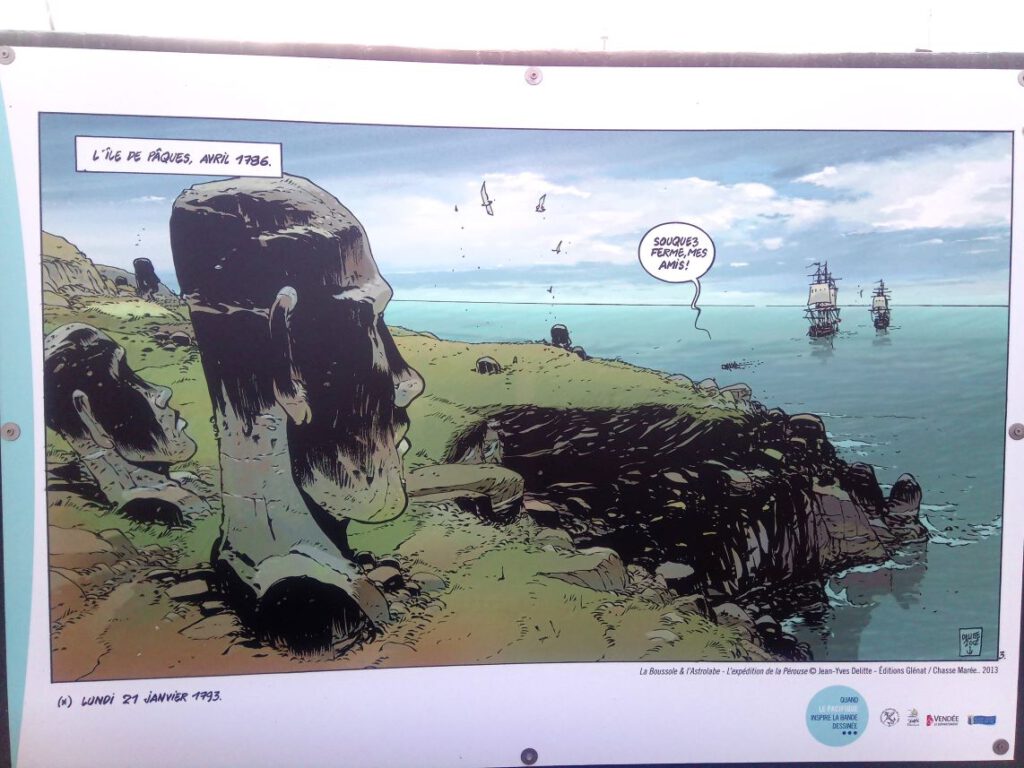
And funny comics on the walls in the harbour.
I just couldn’t find the statue of Monsieur Beneteau, it seems to have disappeared. What a pity, I wanted to take a photo of it.
Saturday, 13 July 2024
Port Tudy — Île de Groix
Here the weather is Breton, hardly can I remember what it was like when it was 30 degrees all the time. Summer has been over for a good two weeks now, after the rainy day in Les Sable it didn’t get really warm, barely above 20 degrees. And the wind here is mostly westerly and sometimes blows quite strongly. I always have to take advantage of the gaps now, so good weather and no westerly or northwesterly winds.
But I’ve made it, as I’m just before the Finistère. I’m almost back on schedule, as I wanted to circumnavigate the western tip of France in mid-July. Now it just depends on the right weather. Loc-Tudy, Audierne, Camaret-sur-Mer and then L’Aber Wrac’h, and I’m in northern Brittany. I’m sure I’ll feel right at home by then.
From Saint-Gilles-Croix de Vie I sailed to the Île de Yeu, unfortunately in very unfavourable conditions, with wind and sea from the front and later drizzle. But I wanted to reach this westernmost point, because from there it is only two longer tacks northwards, and I would be rid of the annoying swell for the time being.
The Saint-Gilles exit at low tide. Here everything is built on rocks again, the sandy coast is over. Shortly after this shot I had a heavy grounding, but it wasn’t a bare rock, it didn’t rumble loud enough for that. However, with the engine running and a strong heel, I was able to get back into the middle of the fairway. The red buoys are almost on dry land here.
There are bare rocks in front of the harbour entrance.
In the drizzle just before Port-Joinville on the Île de Yeu.
Here we had another forced break due to the strong north-westerly wind. The town of Joinville and the island seem to be a bit dreary.
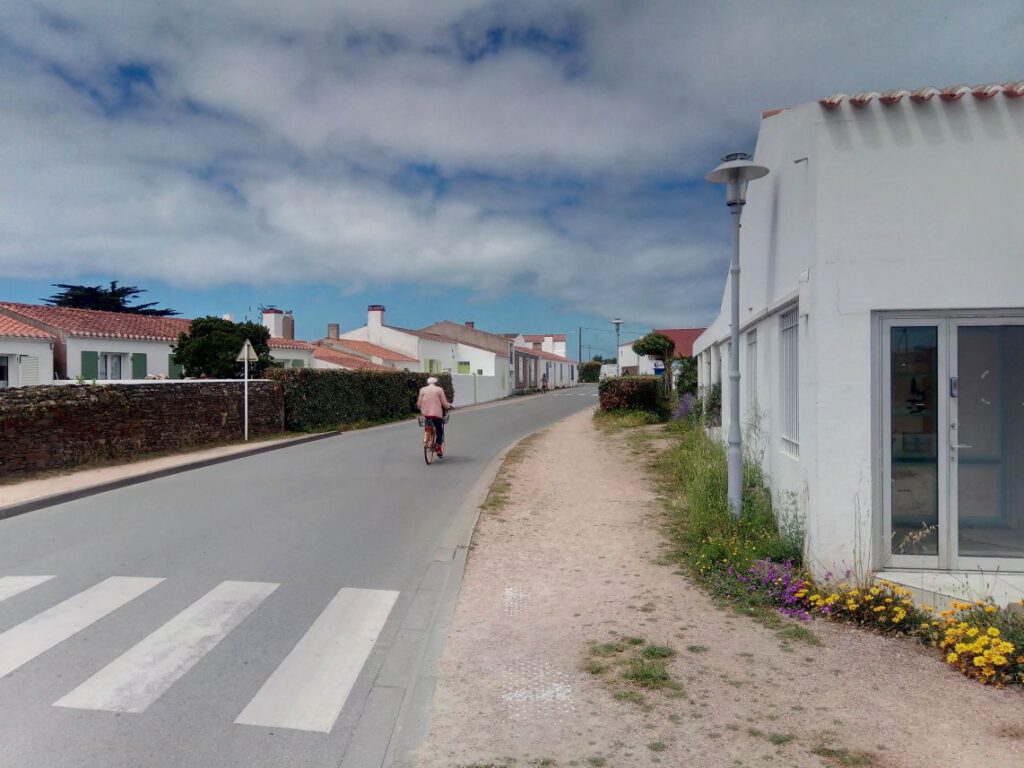
Streets
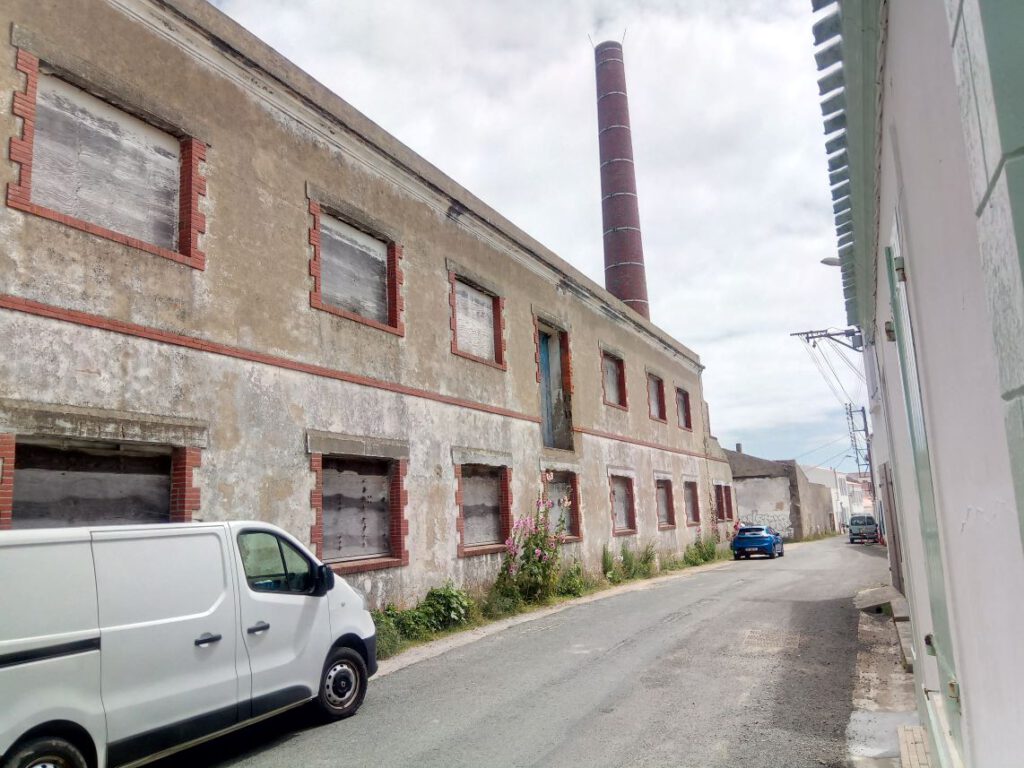
Dilapidated factories. Incidentally, as on the Île de Noirmoutier and on land, many tinned fish still produced here. This harbour is also a very large fishing port. The whole area is the French centre of fish canning factories.
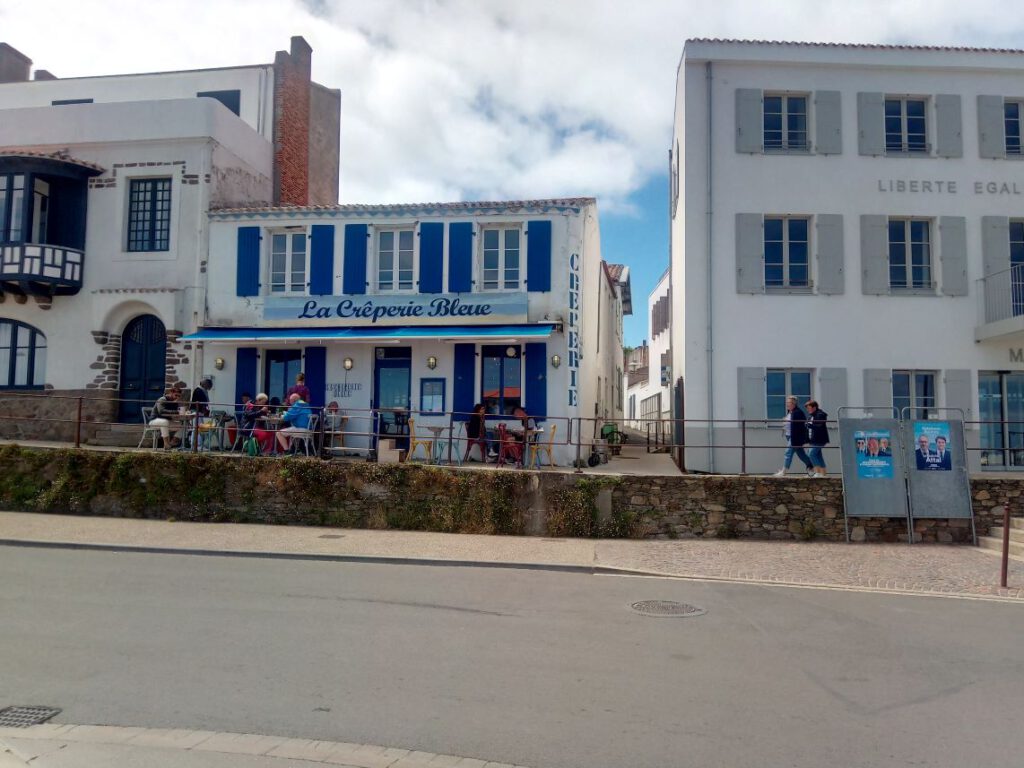
The colour bleu dominates a lot, including at this creperie
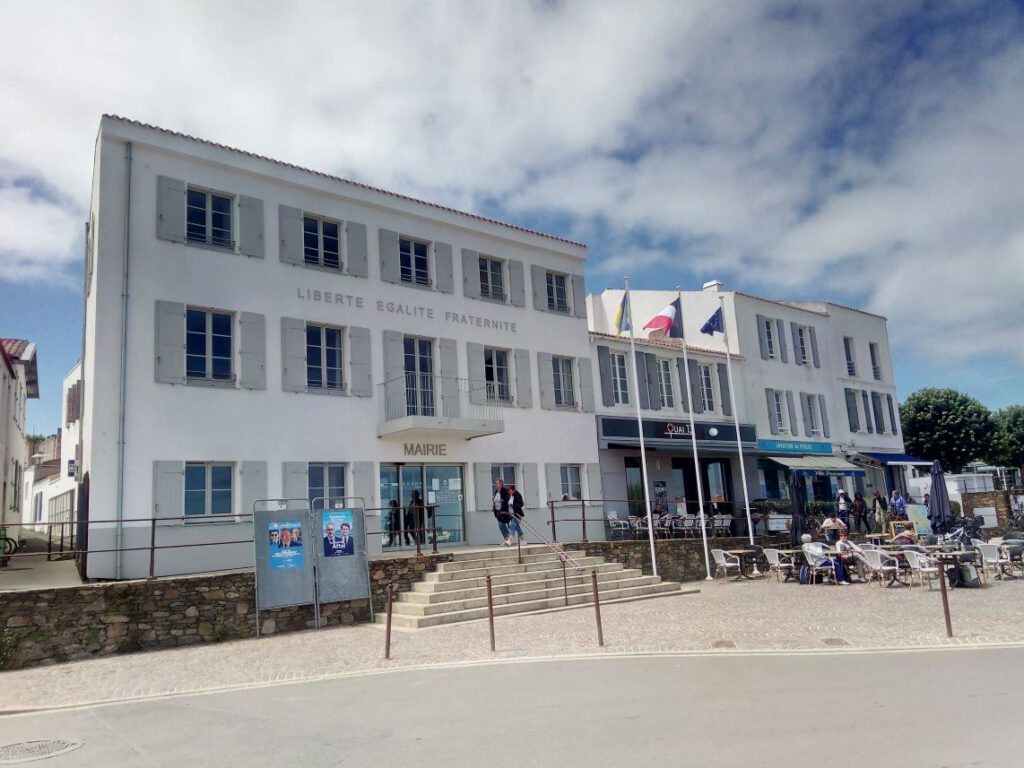
and next door at the Mairie with the French motto: Liberte, Egalite Franternite.
The harbour entrance looks a little gloomy, but that suits this harbour.
On the way north, I realised more and more that I had already been here. The only difference: on the way south I always had the coast on my port side, now it’s the other way round, always on my starboard side. That’s why I’m not going to document everything, but nevertheless, the Île de Noirmoutier with the harbour L’Herbaudiére is simply too beautiful. Especially coming from the Île de Yeu, I had to capture quite a few things. The cityscape is simply more pleasing. A few examples:
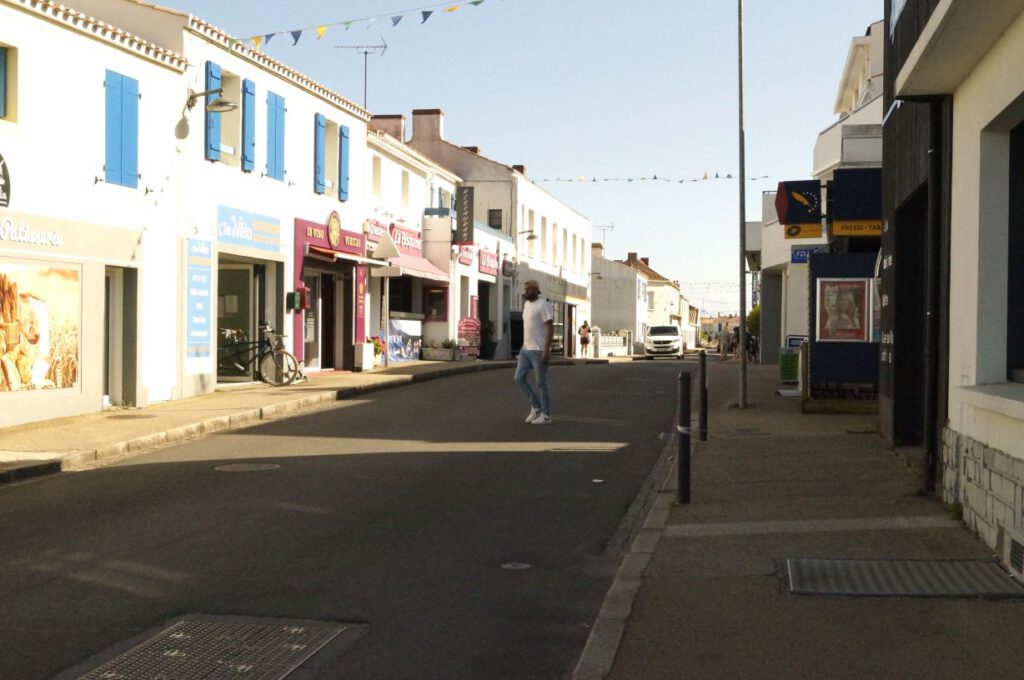
The main street
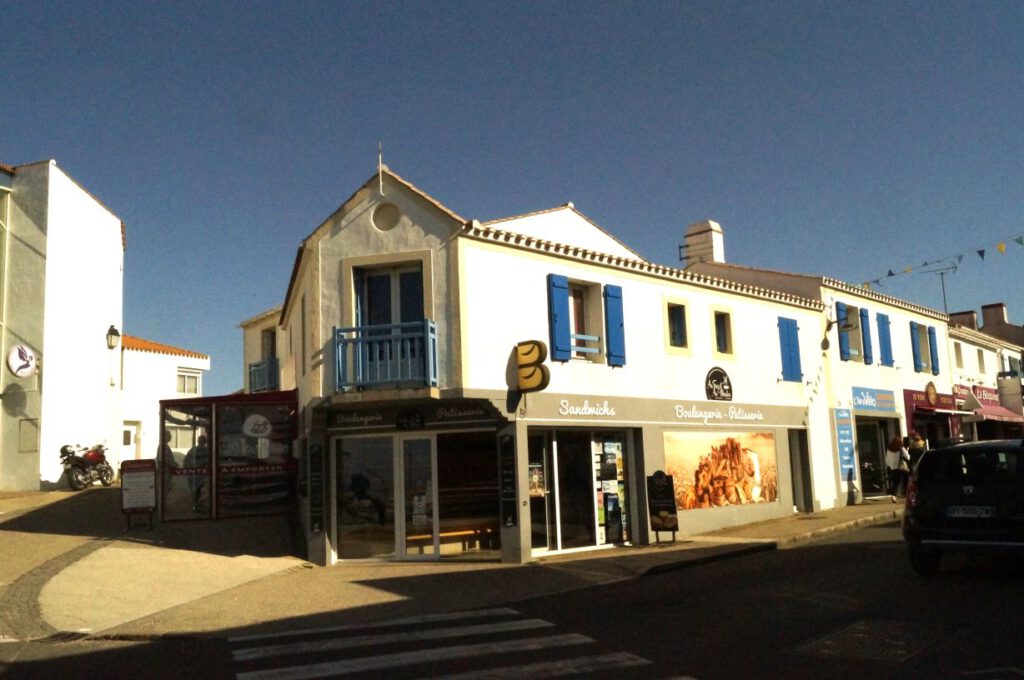
My bakery
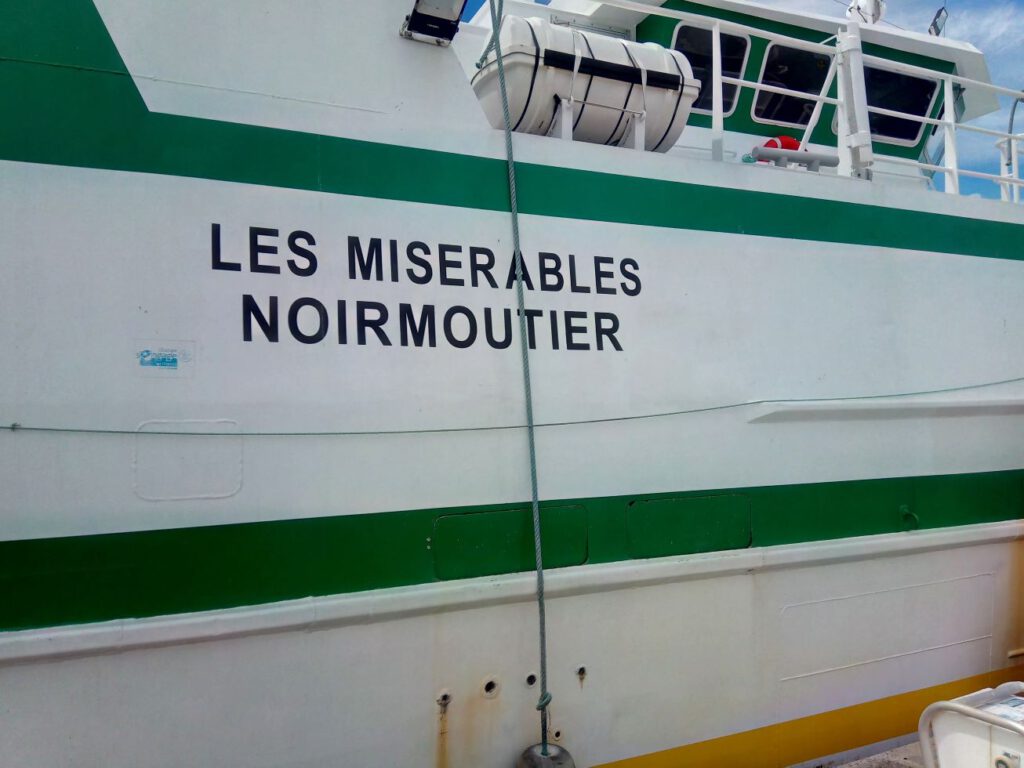
This fishing patrol vessel still exists. I wonder who came up with this name.
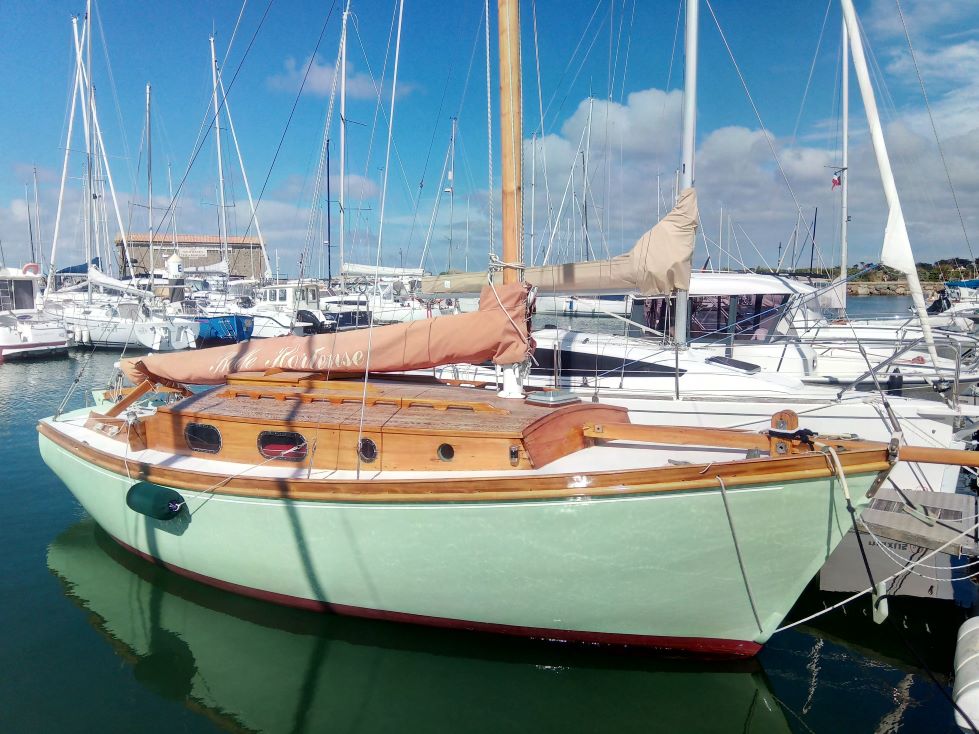
The name of this sailing boat says it all, simply beautiful.
And here also a sound from the wind.
On the way north I crossed the Loire, and now everything is doing under sail again. The swell was still quite good.
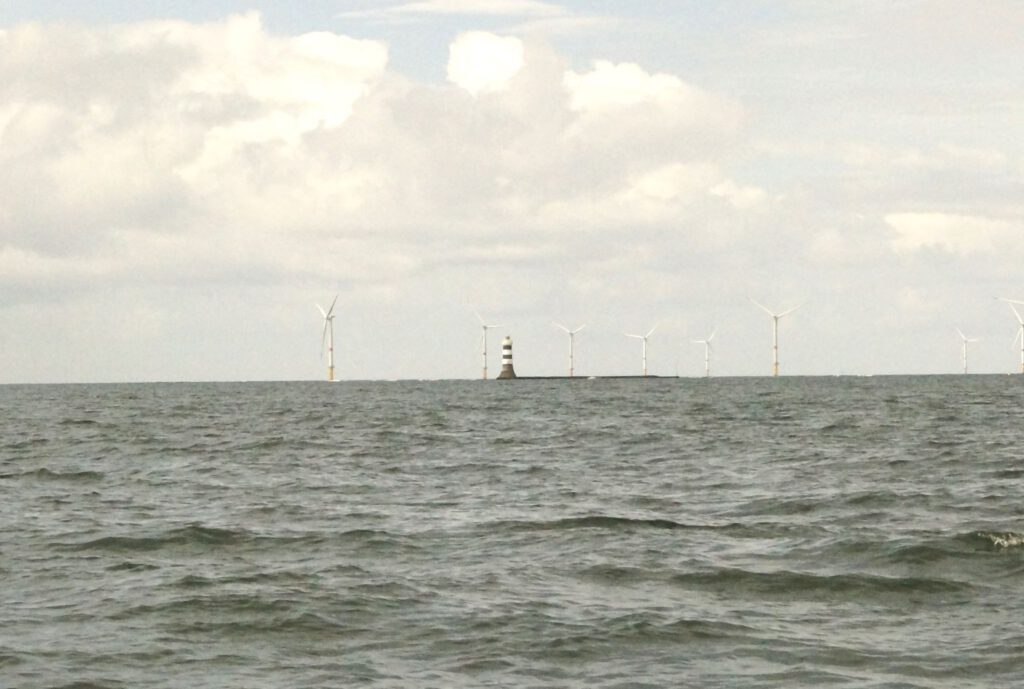
It was over at the Plateau de la Banc.
I came to La Turballe and was amazed at the large number of sailors just leaving the harbour. All regatta sailors, but with different destinations. As I found out later in the harbour, they were just starting a regatta Transquadra to Martinique with a stopover in Madeira. Crazy or not, here they sail many races on the coast anyway.
I also had to pause again in La Turballe because the next destination, Haliguen on Quiberon, was pretty much to the north-west. Again, the wind came from there.
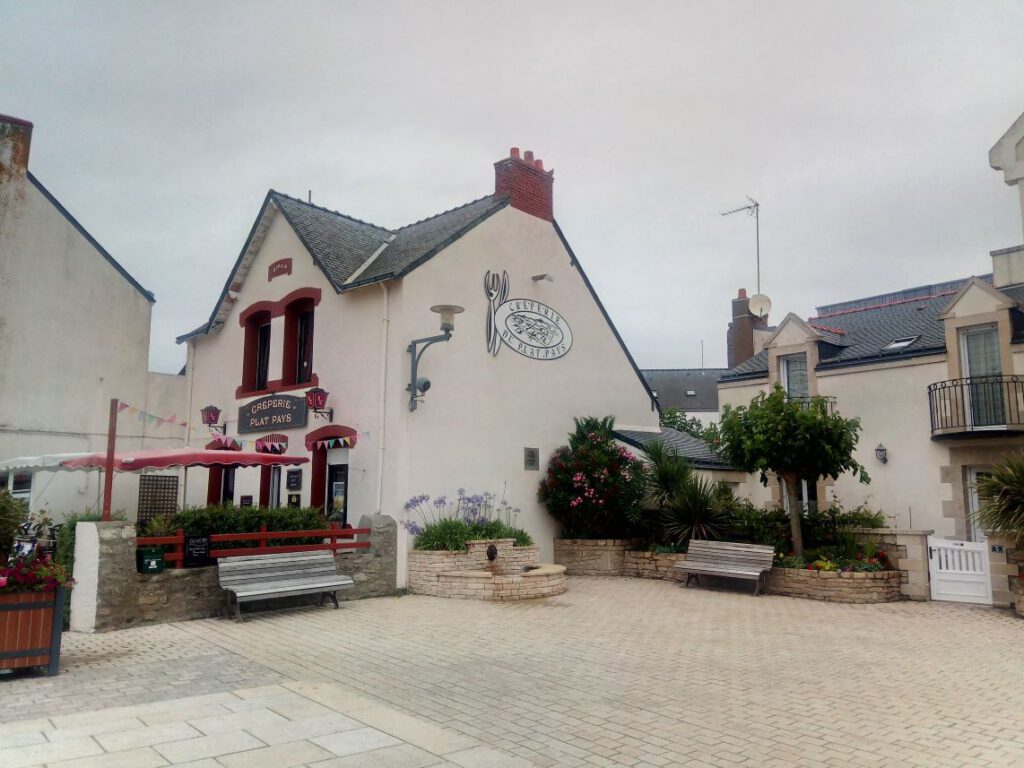
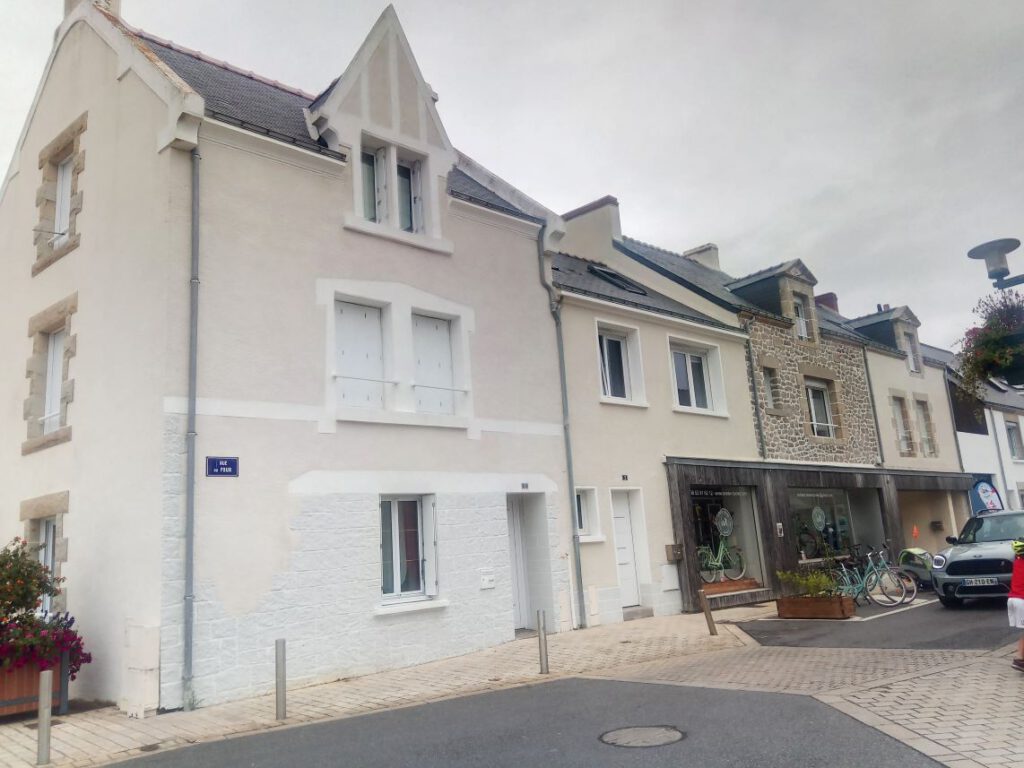
Here the buildings are already Breton in style, with grey roofs and some built with natural stone.
There is nothing more to say about Haliguen, one night, and we continued on to Port Tudy. Under sail again, which is almost abnormal. Shortly before Île de Groix, however, the wind was switched off. I was in Port Tudy at 2 p.m. in the hope of finding a decent berth. Under no circumstances did I like to moor in the outer harbour by a buoy. Everything was already full again, but I was told that I could get into the inner harbour, the Bassin á flot, at high tide. High tide was around 9 pm, and they could open the dock from 8 pm. But from 2.30 p.m. to 8.30 p.m. there was continuous heavy rain and nobody did anything. The gate remained closed. The next morning, however, I could go inside at around 8am. It’s better here, but it’s more or less only for small boats. I finally have an advantage. There are now many pictures of Port Tudy, because I haven’t been here yet.
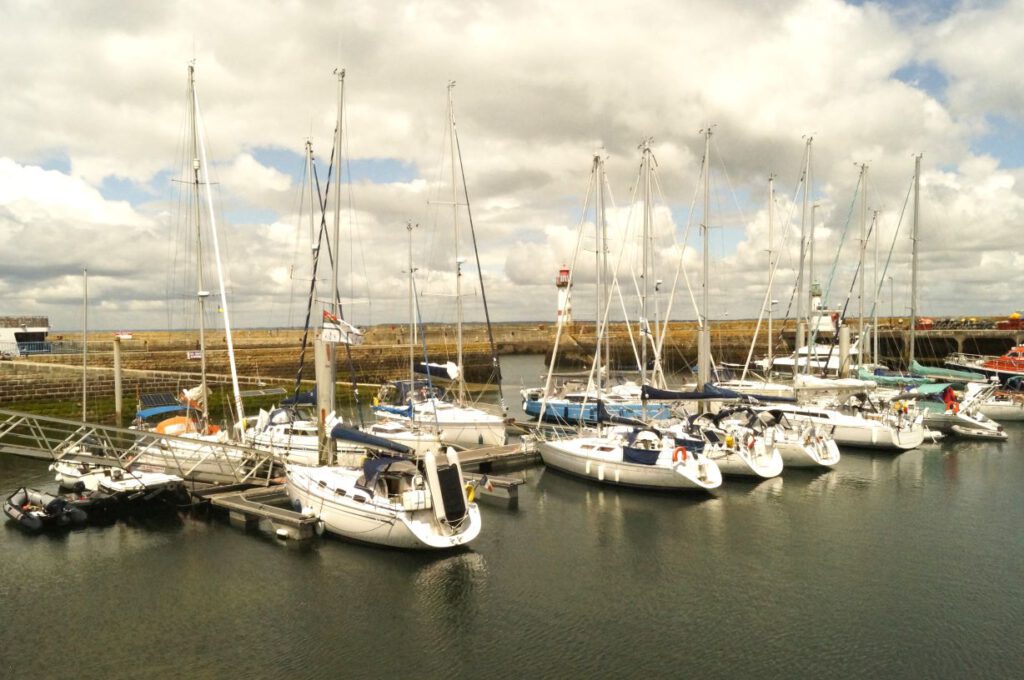
The guest harbour is full again from 1pm.
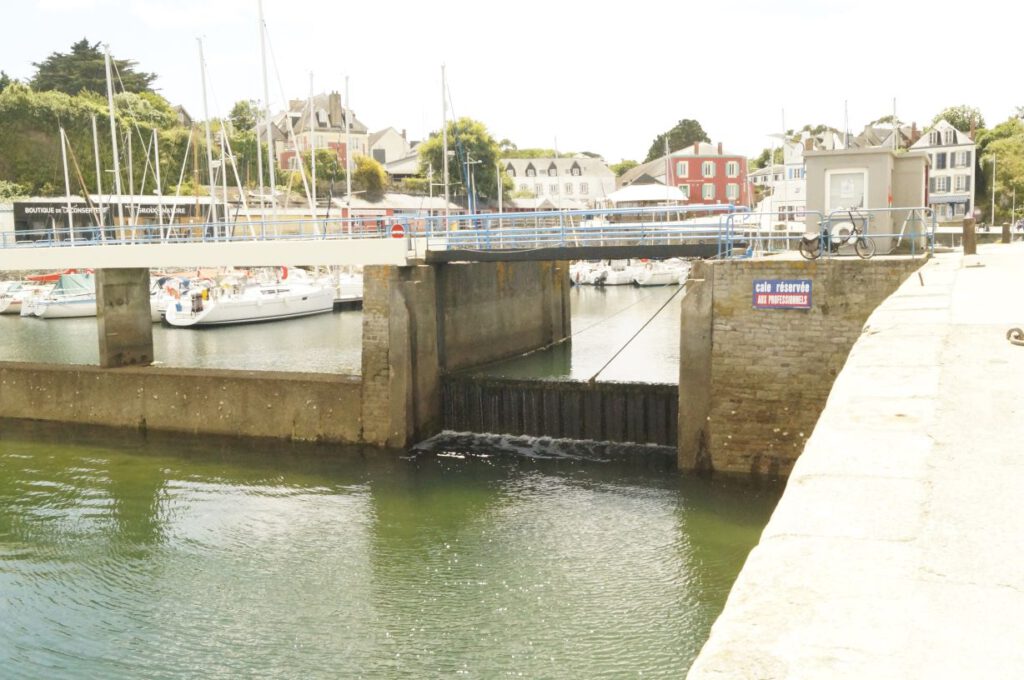
The gate to the Bassin á flot
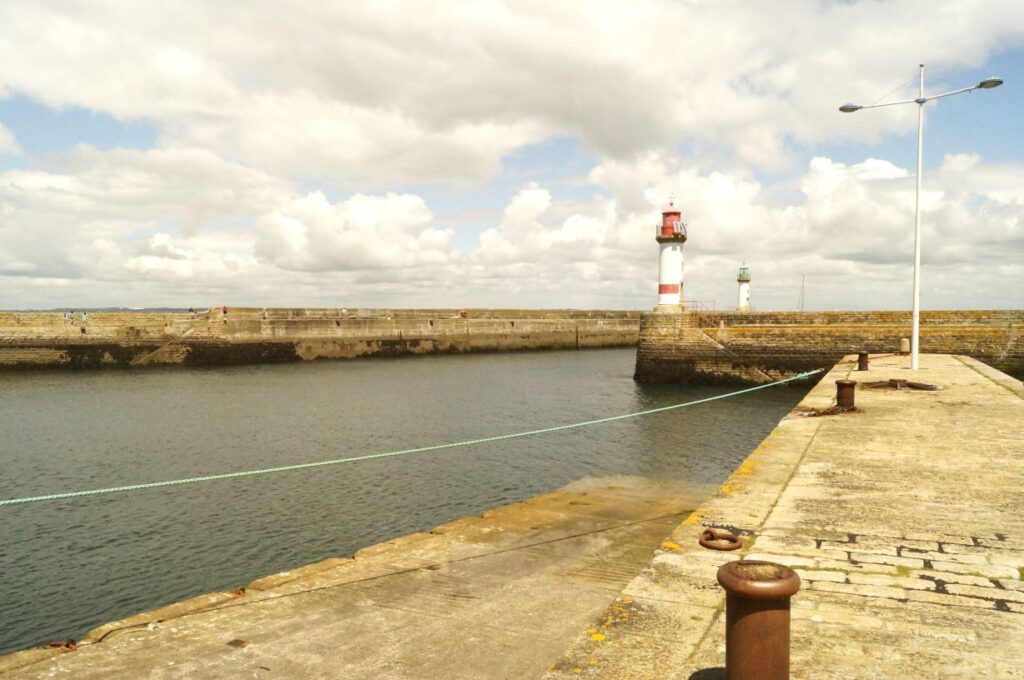
The rustic harbour entrance
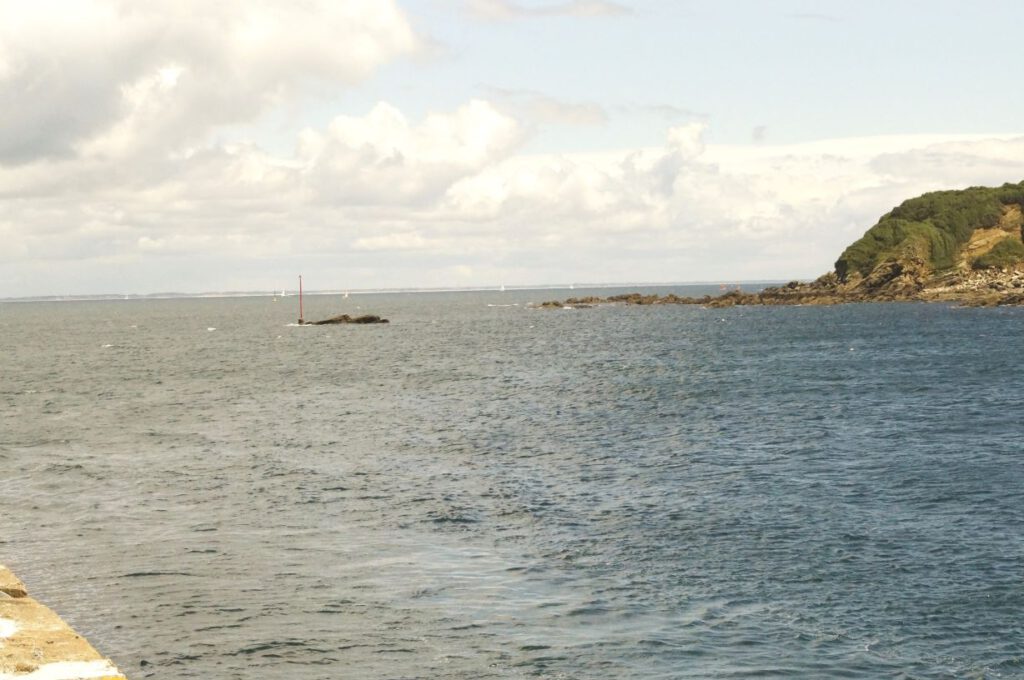
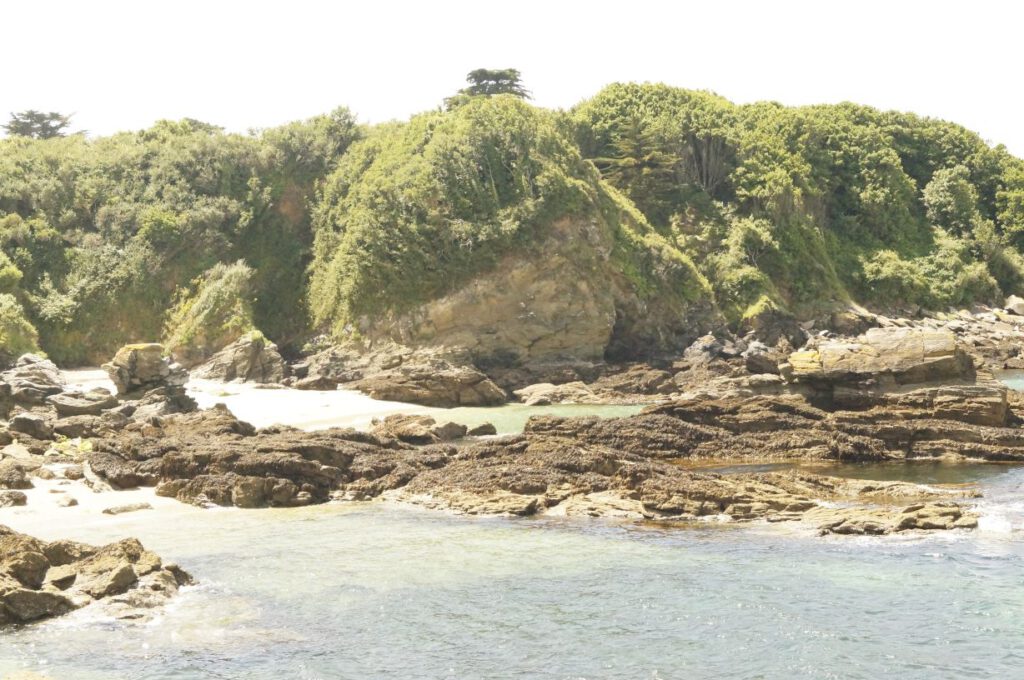
The rocky coast to the right and left of the harbour
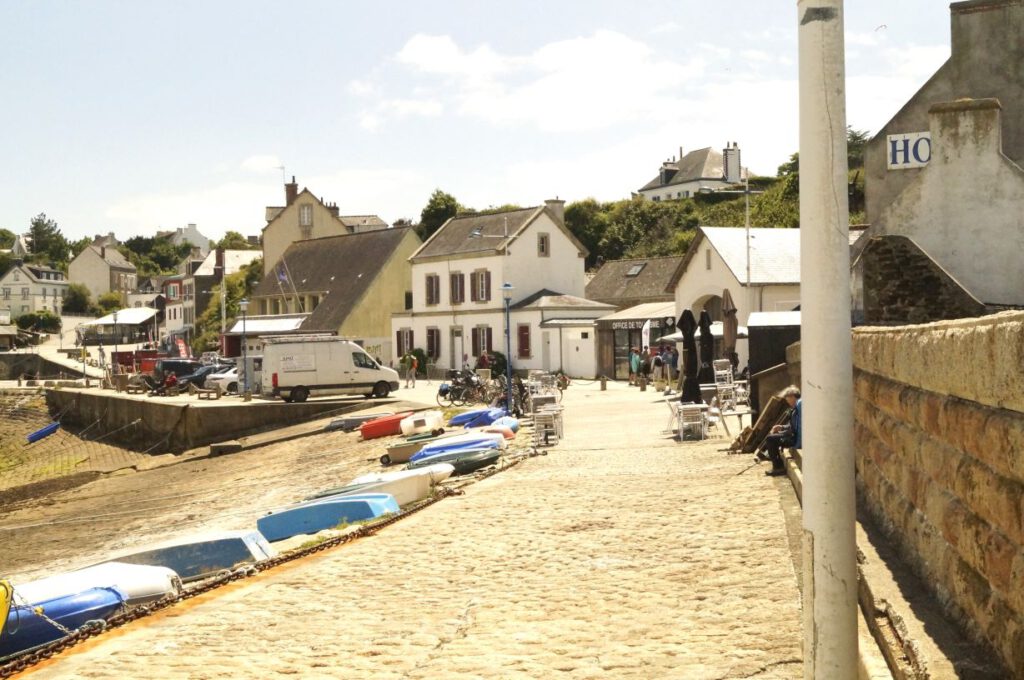
The ‘harbour mile’
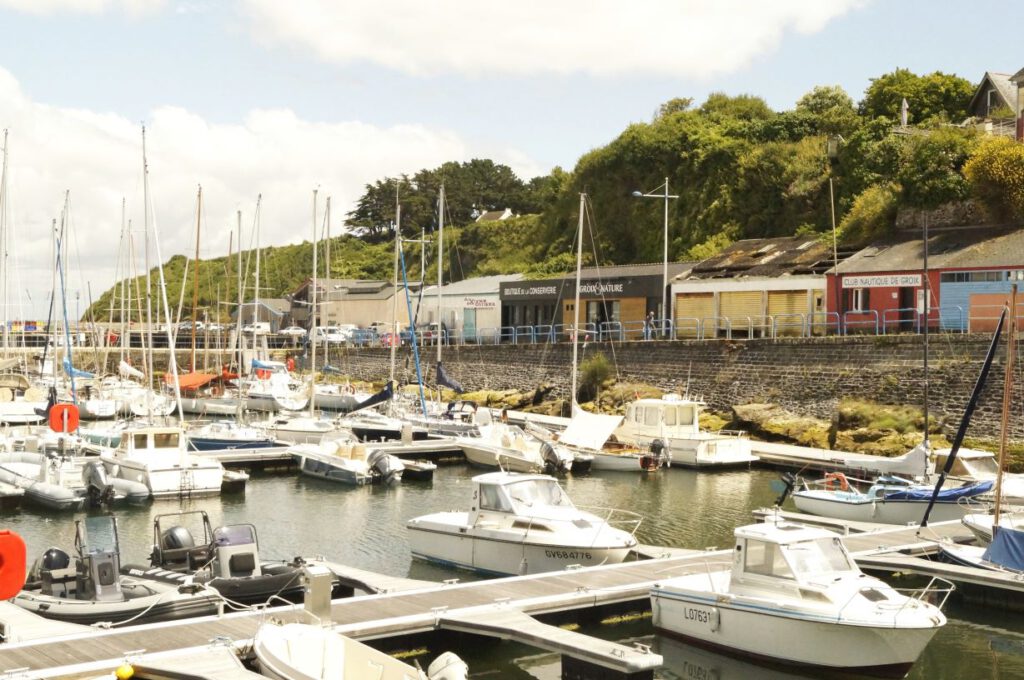
Amica in the basin
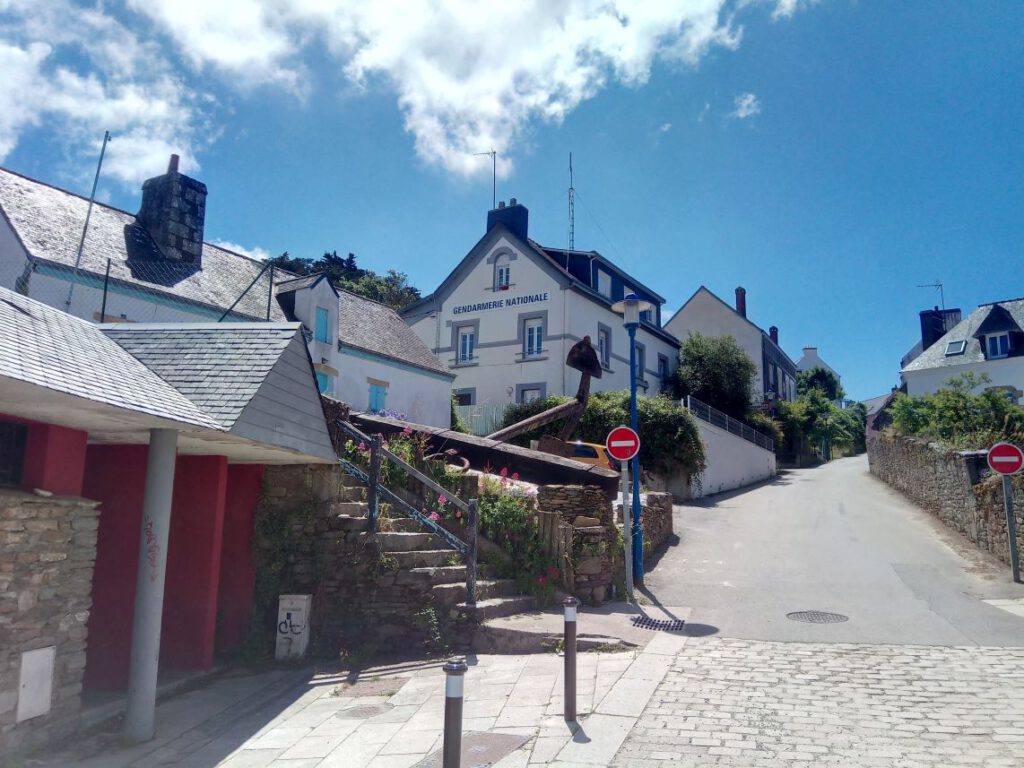
The gendarmerie in a beautiful building.
Saturday, 27 July 2024
Roscoff
It’s done, Finistère is behind me, and I’m back in the English Channel. This time the weather was persistently unstable. I was still able to make good progress as far as Camaret-sur-mer, then I had to wait for the right conditions so that I could complete the two trips via L’Aber Vrac’h to Roscoff. It took me over a week to cover this corner, and it was wet and cool.
I really enjoyed the mild and lovely south of Brittany, with calm and lots of sunshine. I had to motor half the way from Île de Groix to Concarneau, the wind was just too light and here you also have to watch out for the currents.
The first phase of bad weather came in Concarneau, with lots of rain and strong winds, and I stayed for three days. Weather like this, you don’t even need to think about circumnavigating Finistère. Instead, I was able to do my laundry in peace and quiet and visit the Ville close. The Ville close is a medieval town surrounded by a fortress wall and is now a tourist highlight. Nevertheless, I ventured inside and it was worth it.
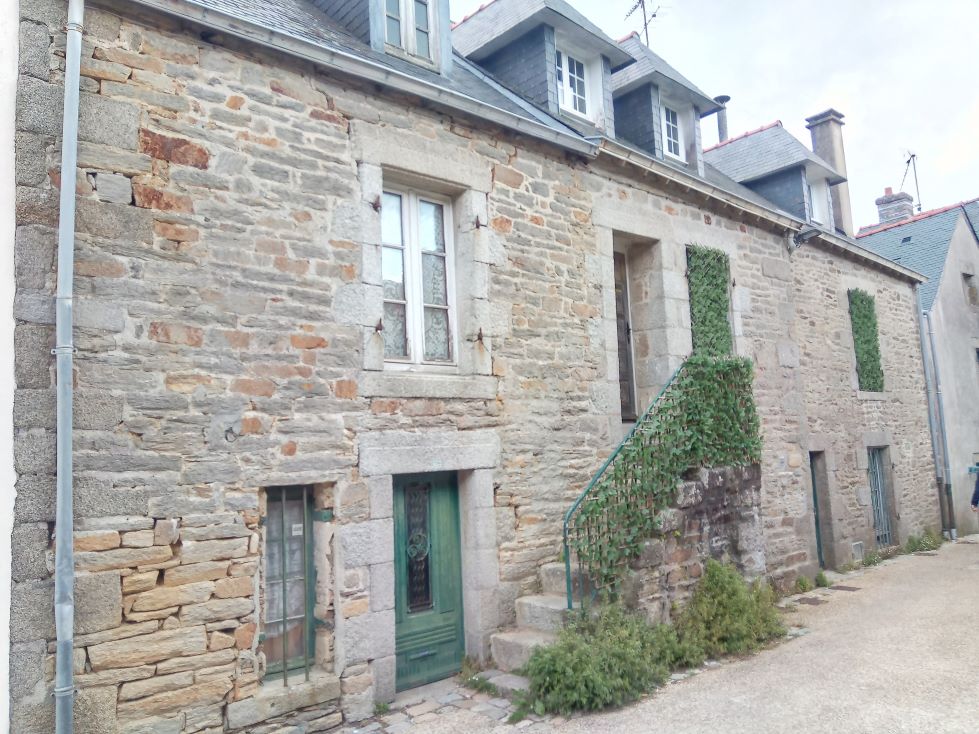
Many very old houses, in Breton style
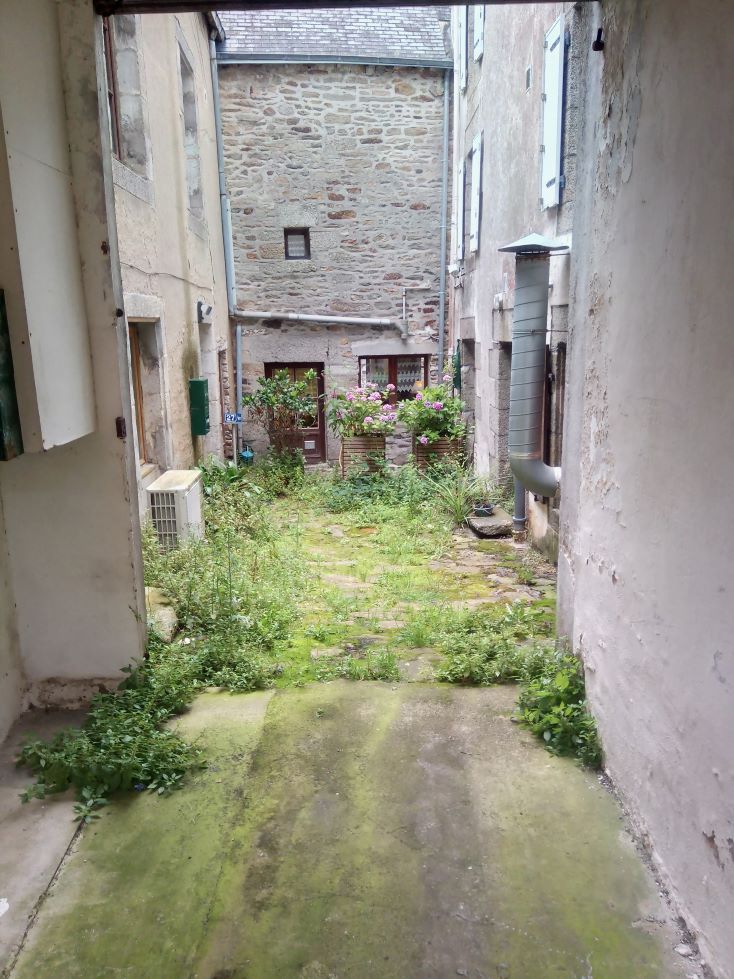
Interesting courtyards
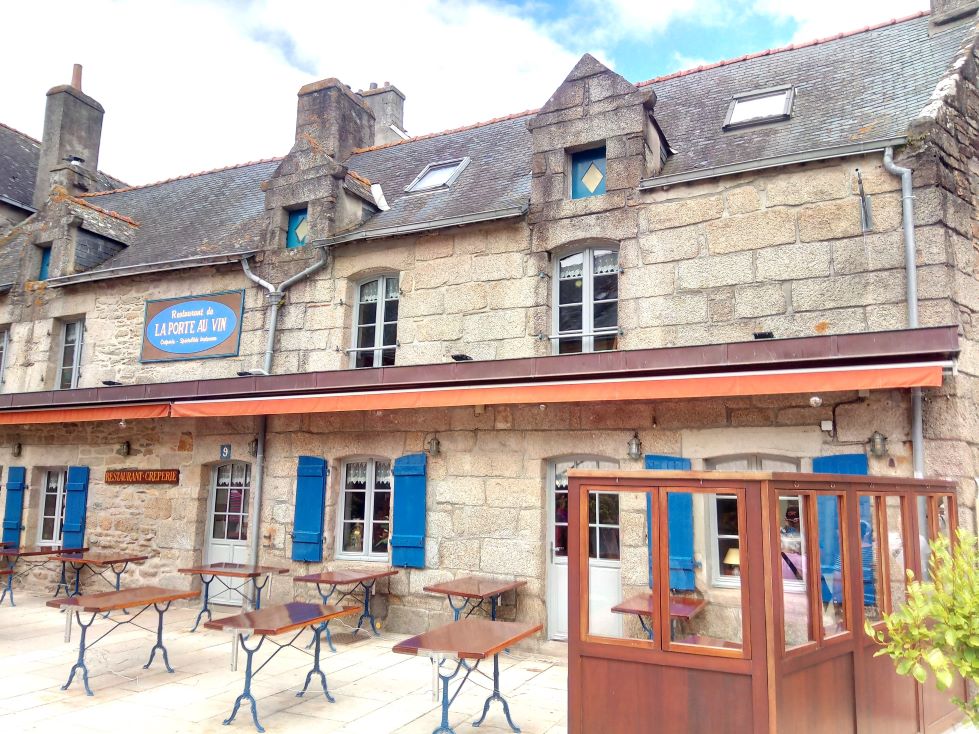
Of course the buildings used as restaurants.
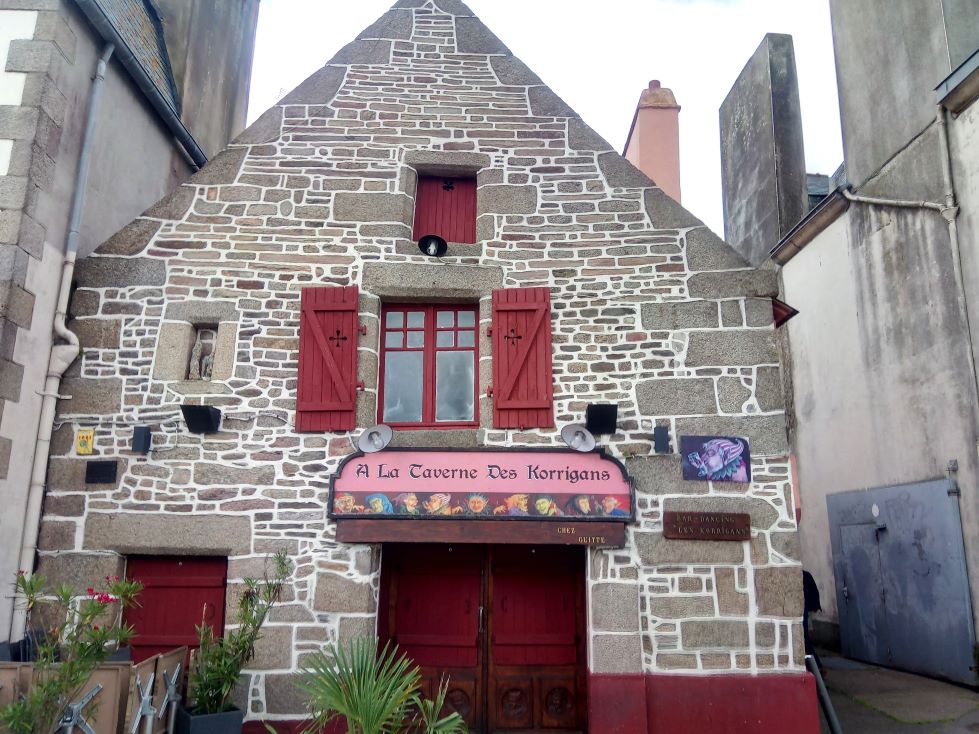
You can find also restaurants in the town outside the fortress. I always walked past L’Amiral. There really were many people sitting there in the morning at a petit café. Have they elevated it to cult status because “Le commissair Dupin” use to do the same?
Now I’m having problems refuelling. Everything is self-service and only with a credit card. Unfortunately, I no longer have one and nothing works manually. But it should still be possible in Loc-Tudy.
On the way to Loctudy, I was able to drive along a snow-white beach. It looked like the Caribbean from afar. This will probably be the last long white beach, because from now the rugged rocky coast dominates more and more.
The entrance tower to Loctudy is a special number. Here in Loctudy it is still possible to refuel the old-fashioned way, which means that I have to pay my bills at the end.
We have reached the first (southern) tip of Finistère. There are many rocks in the water. You can either keep a wide berth or navigate well along the rocks.
On the way to Audierne, my friends, the dolphins, turned up again and there were quite a few of them. Many groups came by from time to time, did jump and diving exercises, but unfortunately they had no further interest in the boat. Only one looked at amica from below. It swam alongside and kept turning its head towards the boat. I wasn’t able to photograph these fast dolphins, they simply dived too quickly.
The entrance to Audierne, there are still some great beaches here.
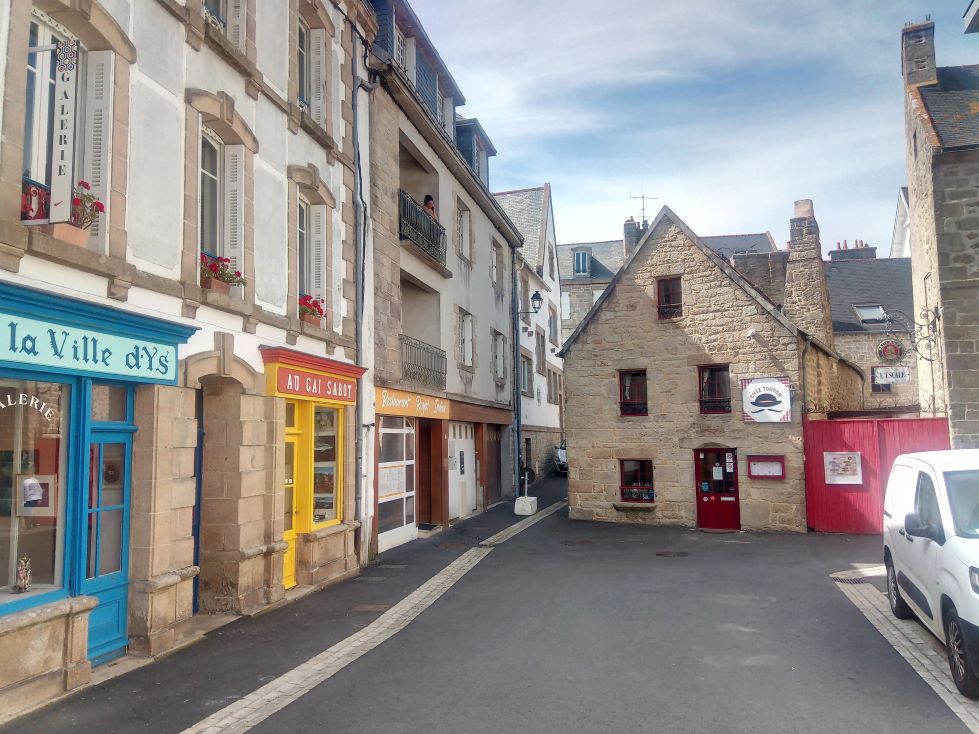
In addition, a beautiful old town centre.
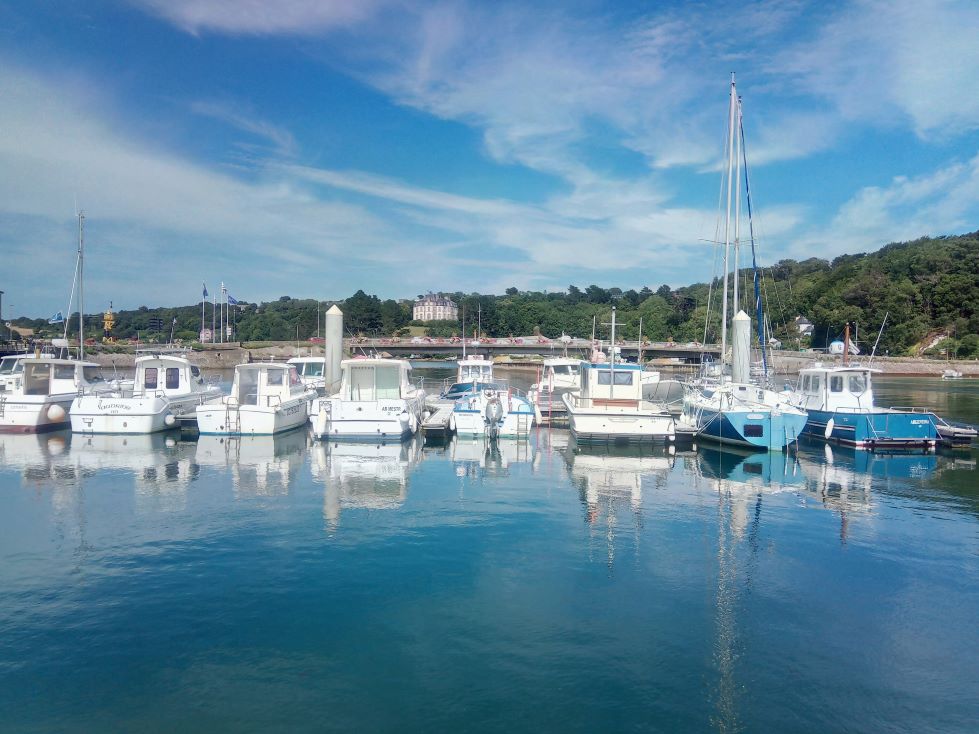
This harbour is located in a green river valley. Early in the morning, I drove under engine to the Point du Raz.
On the way, there were a few patches of fog floating down from the slopes onto the water. I managed to get through them, but those behind me were driving into banks of fog.
The Cap Point du Raz. Arriving just in time for the tide to capsize, so no problems, there was also no wind. Here I really had to say goodbye to the Bay of Biscay, the south is now history.
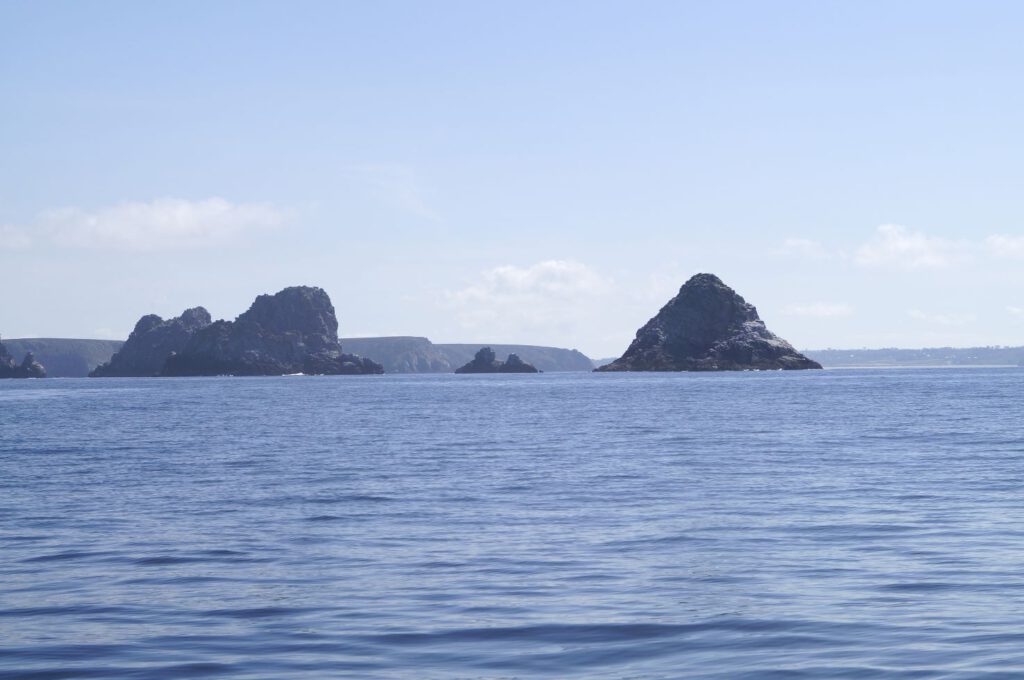
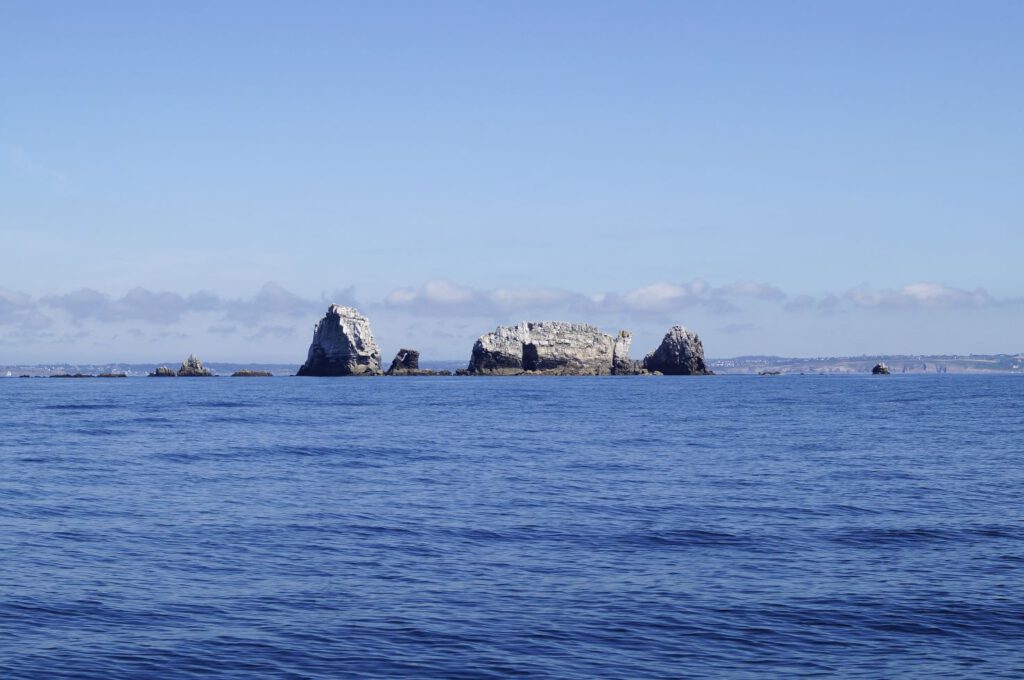
Shortly before entering Camaret-sur-Mer, I was able to prepare myself for the rough North Brittany. Really nice sharp-edged rocks, not as rounded as in the south.
Now I’m sitting here in Camaret-sur-mer and trying to find the best safe passage for the rest of the route to Roscoff. But of course you can’t have all good conditions, factors like time of day or rain are secondary. The important things are currents, wave height, wind direction and strength. I can still remember the times when many sailors from Northern Europe gave Brittany a wide berth. Navigating here without a GPS and chart plotter is certainly a challenge, and the safe route back then was to sail along the southern English coast and then round the western tip of France. It is much easier with a plotter if you also have to pay attention to weather conditions and currents and this ceoff, the coefficients of the water level. Differences between Neaptide and Spring tide amount to a good 2 metres here. That changes the currents.
After five days I had my window to L’Aber Vrac’h, and of course there was no sign of the forecast south-westerly wind of 2-3 Bft. Unfortunately, this was the day with a high coeff, but still far from other highs, about 80% of a normal tide. However, it did get a bit uncomfortable at the Rade de Brest exit, with the outgoing water and swell making it very choppy.
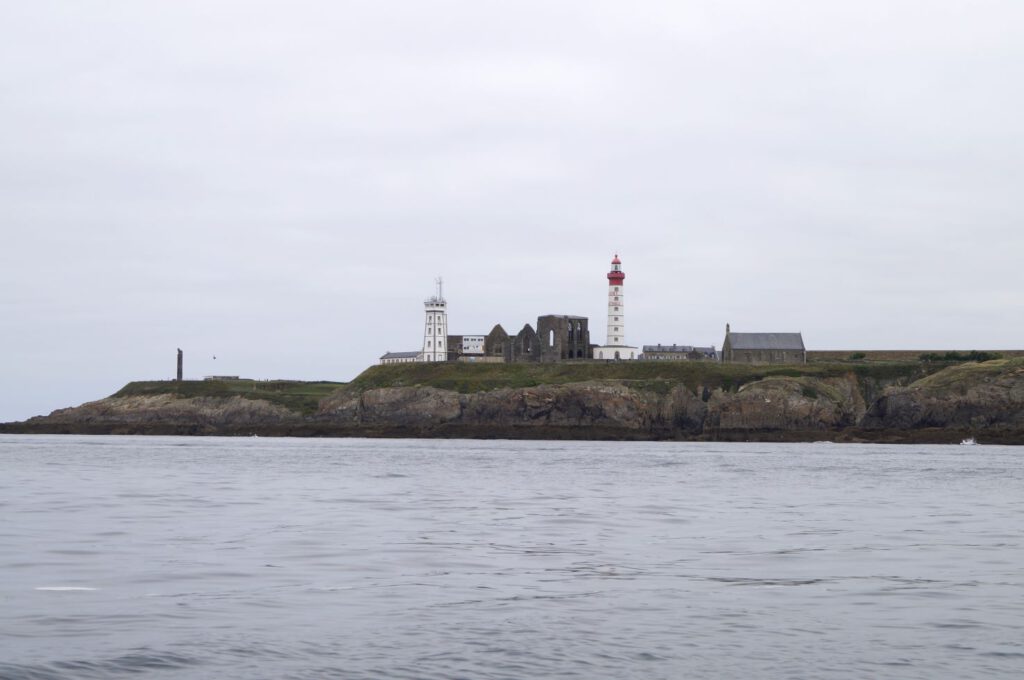
Sometimes there are also nice towers, like this one at the entrance to Passage Chenal du four. A little too early at the corner of Pointe de St. Matthieu, there was still a counter-current from the north of a good 2 knots up to about L’Aber-Ildut. I therefore sailed close to the rocks under land. A number of local sailors were doing the same. I can do the same they do. What’s more, the sea was suddenly gone here, with absolutely calm water behind the Île de Beniguet, the Île de Molene and the Île de Quessant. Only in the last hour before entering L’Aber Vrac’h did it get choppy again due to the current, which was now travelling well northwards, and the swell running north around the Île de Quessant.
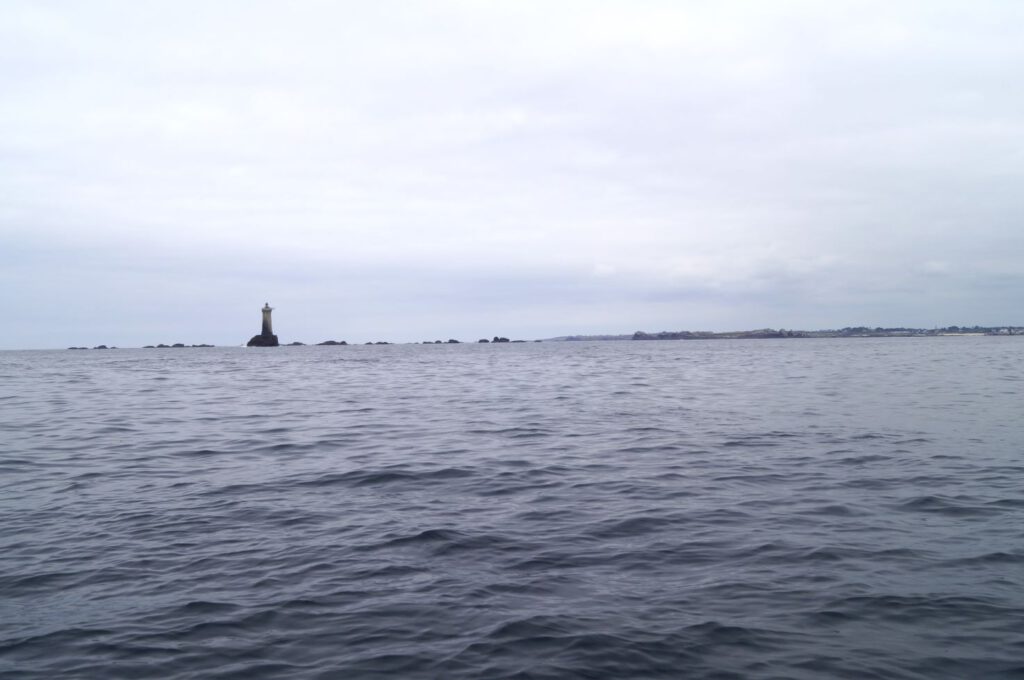
Tower on rocks. Here exist many towers because of the rocks, but they are only beautiful in exceptional cases.
In L’Aber Vrac’h I had to wait out another spell of bad weather and wait for the early tide. I don’t set off here in the middle of the night and drive between the rocks. After 3 days, the conditions turned out to be favourable: Wind around zero and a start at 7am shortly after sunrise, with high tide in Roscoff around 12pm. This should be manageable, as there is also a good current of up to 4 knots.
We left L’Aber Vrac’h in the morning, quite cool and very damp, but the sun was becoming shining through.
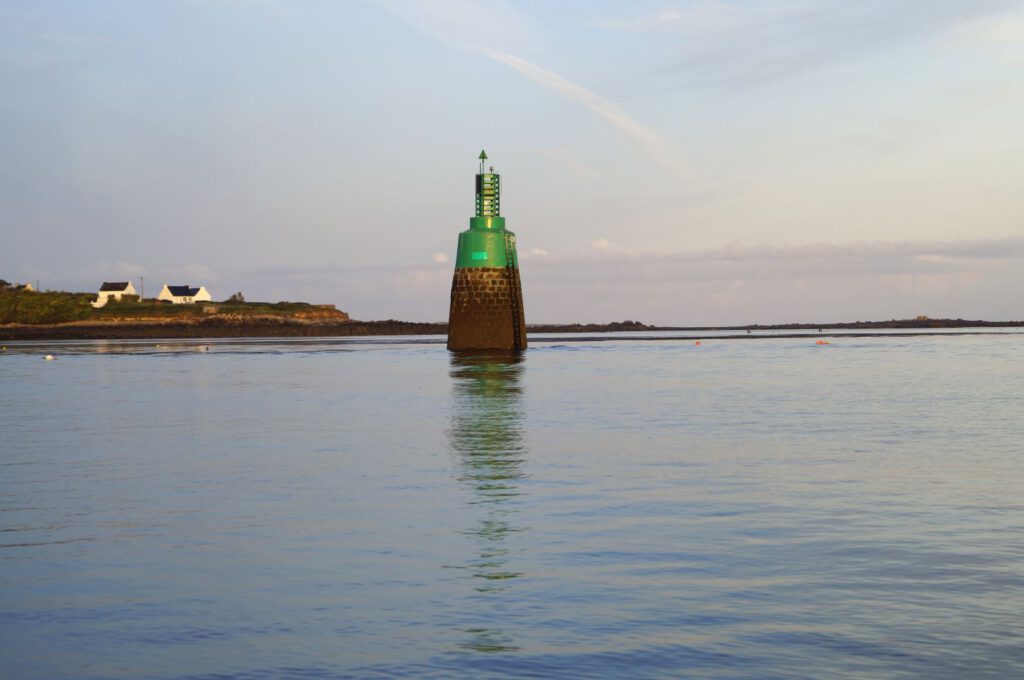
These seamarks never cease to amaze me, buoys sometimes bricked up, using existing structures. So don’t round a buoy!
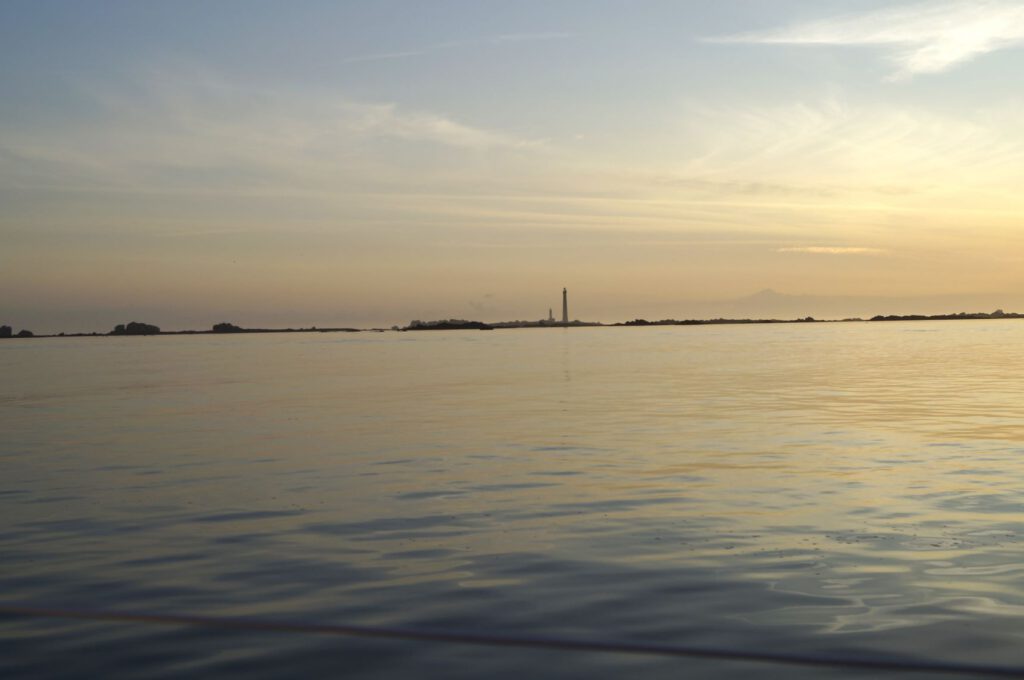
The Île de Vierge lighthouse in the morning light
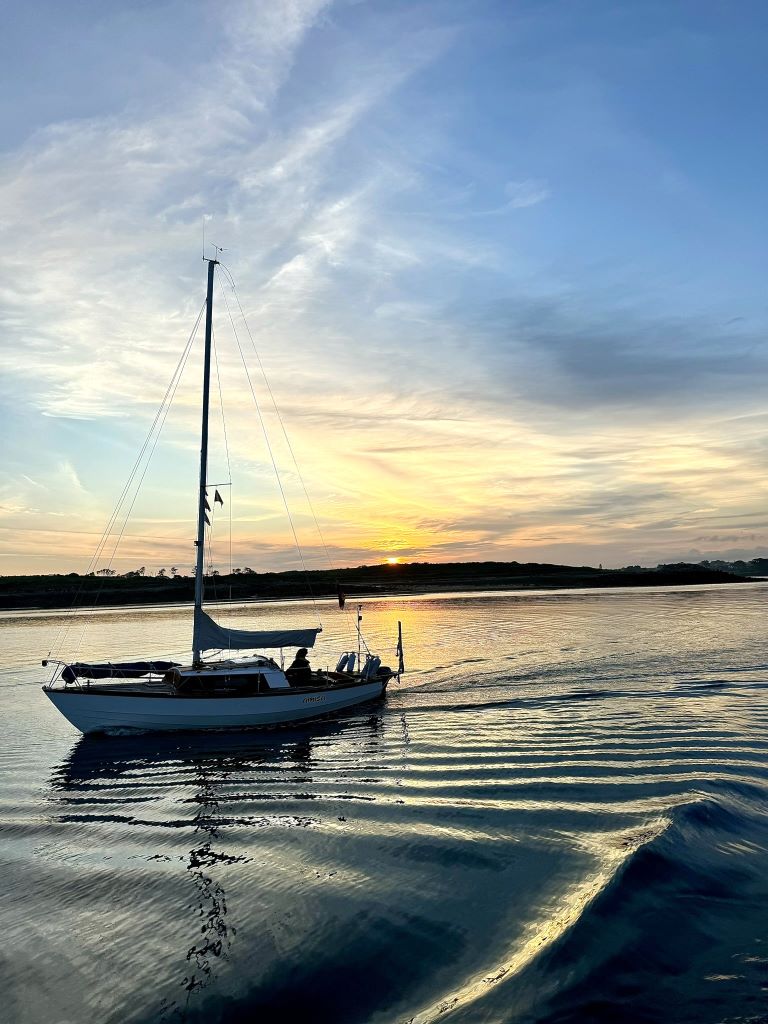
Also a great picture by amica © Christel S
Along the north coast, the current accelerated us up to 8 knots over ground. I only needed 5 hours to cover the 33 nautical miles, despite a counter-current of around 1 hour at the beginning and end of the trip. I sailed through the passage between Île de Batz and Roscoff again, just like on the way south.
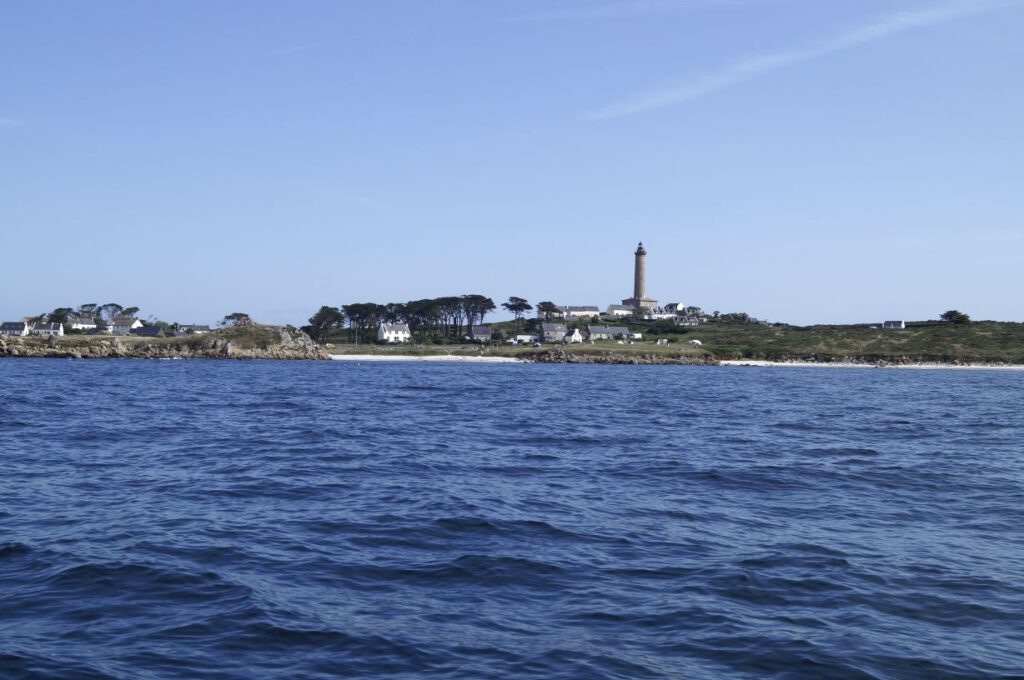
The island also has a lighthouse, of course.
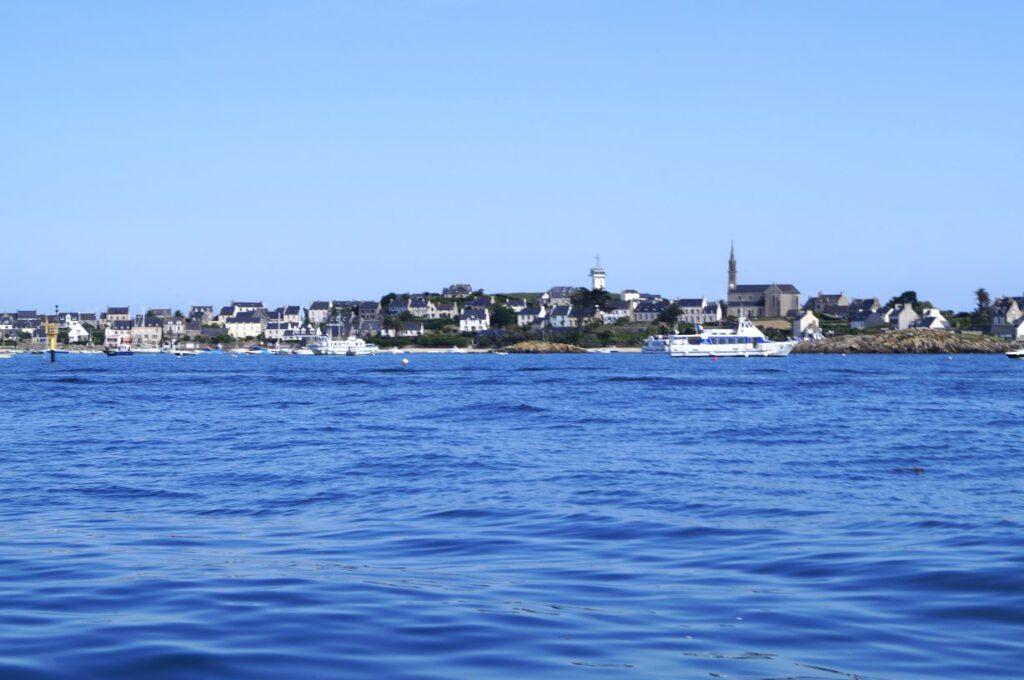
Moreover, the island inhabited!
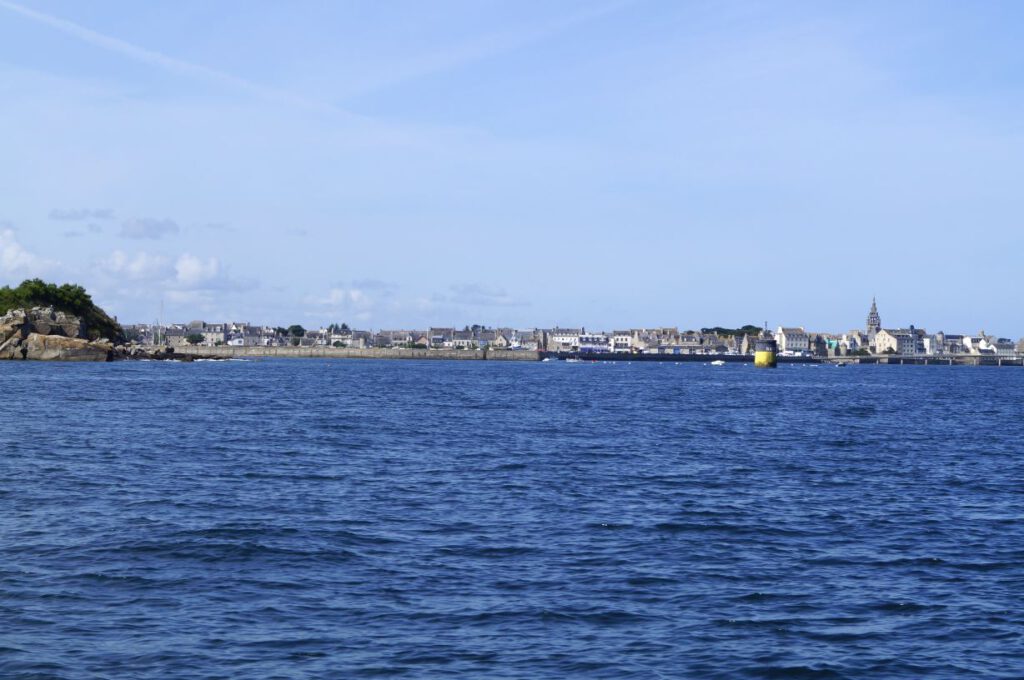
Roscoff is on the other side.
(My videos are currently causing problems with the integration into my blog. I’m working on it, but it needs a good internet connection).
Continue here: From Roscoff to Calais
